Martin Saint II
From astronautix:
SAINT II
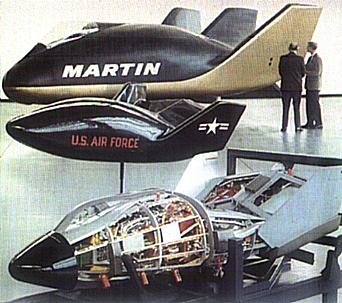
X-23 with X-24
X-23 with Orbital X-24
Credit: Lockheed Martin
American manned combat spacecraft. Cancelled 1961. At the beginning of the 1960's, the USAF examined a number of approaches to a manned spacecraft designed to rendezvous with, inspect, and then, if necessary, destroy enemy satellites.
The preferred design was a lifting body, a development line that led eventually to the X-24C spaceplane. The project was quickly squelched by USAF X-20 Dyna-Soar advocates (or possibly it went deep black). Alternatives publicly mentioned as replacements for the mission were the Dynasoar with special payload provisions, or Gemini variants with combat provisions.
On 19 May 1961 the USAF Space Systems Division (SSD) announced its SAINT-II manned space interceptor concept. This was to be a two-man lifting body spacecraft, using subsystems developed for the SAINT-I unmanned satellite inspector. SAINT-II would be capable of orbital rendezvous and limited space logistics missions. Launch vehicle would be a Titan II equipped with a Chariot LF2/Hydrazine high-performance third stage. Following an unmanned test flight in early 1964, 12 manned orbital missions would be conducted, including both near- and far-earth flights. DynaSoar I was seen as not being capable of the mission, due to its limited payload, and restriction to low earth orbits. SSD estimated the total cost for SAINT-II to be $413.8 million, to be spent in the period FY1962 - FY1965.
Naturally this program was seen by USAF DynaSoar advocates as a threat to their project. In October 1961 a USAF management group criticized the proposed SAINT II program as unrealistic in schedule and budget. Not only was it eventually cancelled, but also the USAF later prohibited further use of the SAINT designation in proposals.
--------------------------------------------------------------------------------
--------------------------------------------------------------------------------
Associated Countries •USA
--------------------------------------------------------------------------------
See also •Combat spacecraft
•Manned
•US Rocketplanes
--------------------------------------------------------------------------------
Bibliography •Pesavento, Peter, "Russian Space Shuttle Projects 1957-1994", Spaceflight, 1995, Volume 37, page 226.
•Godwin, Robert, editor, Dyna-Soar: Hypersonic Strategic Weapons System, Collector's Guide Publishing, Ontario, Canada, 2003..
--------------------------------------------------------------------------------
--------------------------------------------------------------------------------
SAINT II Chronology
--------------------------------------------------------------------------------
1958 June 19 - . •USAF issues requirement for an anti-satellite system - . Nation: USA. Spacecraft: SAINT; SAINT II. Summary: USAF GOR-170 is issued for a system to inspect and destroy enemy satellites..
--------------------------------------------------------------------------------
December 1959 - . •Public furor as the USAF fails to properly identify unidentified object in space. - . Nation: USA. Spacecraft: SAINT; SAINT II. Summary: This humilitation led the Air Force to pursue its SAINT ASAT project..
--------------------------------------------------------------------------------
1959 December 21 - . •STL completes study on an anti-satellite systems - . Nation: USA. Spacecraft: SAINT; SAINT II. Summary: Space Technologies Laboratory completed a USAF-funded feasibility study on the topic..
--------------------------------------------------------------------------------
1960 January 31 - . •RCA completes study on an anti-satellite system - . Nation: USA. Spacecraft: SAINT; SAINT II. Summary: Radio Corporation of America completes an ARPA-funded feasibility study on the topic..
--------------------------------------------------------------------------------
1960 February 5 - . •US National Security Council briefed on USAF plans for an anti-satellite system. - . Nation: USA. Spacecraft: SAINT; SAINT II. Summary: Assistant Air Force Secretary Joseph Charyk presented the plan..
--------------------------------------------------------------------------------
1960 April 5 - . •Conditional approval for SAINT development. - . Nation: USA. Spacecraft: SAINT; SAINT II. As usual, Herbert York, McNamara's Director of Defense, Research, and Engineering, was hostile to the concept. It was approved only on the condition that Gerneral Schriever, Commander of the Air Research and Development Command, fund it from the existing budget by cutting back other programmes.
--------------------------------------------------------------------------------
1960 April 21 - . •SAINT System Development Requirement issued. - . Nation: USA. Spacecraft: SAINT; SAINT II. Summary: It also allowed follow-on manned systems to be pursued..
--------------------------------------------------------------------------------
1960 July 15 - . •USAF Air Staff approval for SAINT development - . Nation: USA. Spacecraft: SAINT; SAINT II.
--------------------------------------------------------------------------------
1960 August 23 - . •Final Department of Defense approval for SAINT development. - . Nation: USA. Spacecraft: SAINT; SAINT II.
--------------------------------------------------------------------------------
1960 November 1 - . •Chelomei R winged manned spacecraft project starts - . Nation: USSR. Related Persons: Chelomei; Myasishchev; Tsybin. Class: Manned. Type: Manned spaceplane. Spacecraft: Raketoplan; SAINT; SAINT II. Immediately after cancellation of similar projects at Myasishchev and Tsybin bureaus, Chelomei's new bureau is assigned to build equivalent of US Dynasoar / Saint II. Winged manned spacecraft for interception, inspection, and destruction of US satellites up to 290 km altitude. Two man crew, 24 hour mission duration, large aft drag brakes.
--------------------------------------------------------------------------------
1961 March 16 - . •Project SAINT Phase I contract signed by RCA. - . Nation: USA. Spacecraft: SAINT; SAINT II. Project SAINT (SAtellite INTerceptor) was a large and still deeply classified US Air Force program begun in the late 1950's covering a wide range of technologies for interception, inspection, and destruction of enemy spacecraft. After studies in the 1950’s. The Phase I development contract was let to Radio Corporation of America. Saint Phase I would have weighted 1,100 kg and been launched by Atlas D/Agena B.
--------------------------------------------------------------------------------
1961 May 29 - . •Advanced Re-entry Technology program and SAINT II program. - . Nation: USA. Spacecraft: Dynasoar; Asset; SAINT; SAINT II. Summary: The Space Systems Division completed two development plans for an Advanced Re-entry Technology program and a SAINT II program..
--------------------------------------------------------------------------------
1962 October - . •Project SAINT cut back. - . Nation: USA. Spacecraft: SAINT; SAINT II. Summary: Project SAINT satellite interceptor project was cut back, leading to its eventually cancellation. The spacecraft would have rendezvoused with hostile satellites, inspected them with television cameras, and then disabled them..
--------------------------------------------------------------------------------
December 1962 - . •SAINT is cancelled. - . Nation: USA. Spacecraft: SAINT; SAINT II. Summary: The unmanned SAINT-I and manned SAINT-II anti-satellite systems are cancelled..
--------------------------------------------------------------------------------
1963 November 18 - . •Dyna-Soar use for satellite inspection missions (SAINT II) studied. - . Nation: USA. Spacecraft: Dynasoar; SAINT II. Summary: With the assistance of the Boeing Company; the Minneapolis-Honeywell Regulator Company, and the Air Force Aerospace Medical Division, the X-20 office completed a report for SSD on the use of Dyna-Soar for satellite inspection missions..
****************************************************************
U.S. Navy Project Mer
From astronautix.com:
Project Mer
American manned spacecraft. Study 1956. April 1958 design of the Navy Bureau of Aeronautics for a Manned Earth Reconnaissance spacecraft - consisting of a cylindrical fuselage and telescoping, inflatable wings for flight in the atmosphere.
In April 1958 the Navy Bureau of Aeronautics presented to ARPA the results of its manned satellite study, "MER I" (for "Manned Earth Reconnaissance"). This approach called for an orbital mission in a novel vehicle - a cylinder with spherical ends. After being fired into orbit by a two-stage booster system, the ends would expand laterally along two structural, telescoping beams to make a delta-wing, inflated glider with a rigid nose section. The configuration met the principal MER I requirement: the vehicle would be controllable from booster burnout to landing on water. Fabric construction obviously implied a new departure in the design of reentry vehicles. At ARPA's direction the Bureau of Aeronautics undertook a second study (MER II), this one to be done jointly on contract by Convair, manufacturer of the Atlas, and the Goodyear Aircraft Corporation. The Convair-Goodyear study group did not make its report until December. At that time it reasserted the feasibility of the lifting pneumatic vehicle but relegated the inflation of the craft to the post-entry portion of the mission. By December, however, Project Mercury already was moving ahead steadily under NASA. Funds for a MER III phase (model studies) were not forthcoming from the Defense Department, and the intriguing MER concept became a little-known aspect of the prehistory of manned orbital flight. Project MER was by far the most ambitious of the manned space flight proposals made by the military in 1958. Its emphasis on new hardware and new techniques meant it really had little chance for approval then.
AKA: Manned Earth Reconnaissance.
--------------------------------------------------------------------------------
--------------------------------------------------------------------------------
Associated Countries •USA
--------------------------------------------------------------------------------
See also •Man-In-Space-Soonest The beginning of the Air Force's Man-In-Space-Soonest program has been traced back to a staff meeting of General Thomas S Power, Commander of the Air Research and Development Command (ARDC) in Baltimore on 15 February 1956. Power wanted studies to begin on manned space vehicles that would follow the X-15 rocketplane. These were to include winged and ballistic approaches - the ballistic rocket was seen as being a militarily useful intercontinental troop and cargo vehicle. More...
•Manned
•Manned spacecraft
--------------------------------------------------------------------------------
Associated Launch Vehicles •Atlas The Atlas rocket, originally developed as America's first ICBM, was the basis for most early American space exploration and was that country's most successful medium-lift commercial launch vehicle. It launched America's first astronaut into orbit; the first generations of spy satellites; the first lunar orbiters and landers; the first probes to Venus, Mars, Mercury, Jupiter, and Saturn; and was America's most successful commercial launcher of communications satellites. Its innovative stage-and-a-half and 'balloon tank' design provided the best dry-mass fraction of any launch vehicle ever built. It was retired in 2004 after 576 launches in a 47-year career. More...
•Atlas D American intercontinental ballistic missile. Rocket used both as a space launcher and ICBM. More...
--------------------------------------------------------------------------------
Associated Manufacturers and Agencies •USN American agency overseeing development of rockets, spacecraft, and rocket engines. USN Joint Task Force 7, USA. More...
•Convair American manufacturer of rockets, spacecraft, and rocket engines. Convair, USA. More...
•Goodyear American manufacturer of spacecraft. Goodyear, USA. More...
--------------------------------------------------------------------------------
Bibliography •Grimwood, James M., Project Mercury: A Chronology, NASA Special Publication-4001.
--------------------------------------------------------------------------------
--------------------------------------------------------------------------------
Project Mer Chronology
--------------------------------------------------------------------------------
1958 During the Year - . •Project Mer - . Nation: USA. Spacecraft: Project Mer. The Navy space proposal to the Advanced Research Projects Agency, during the tenure of that organization's interim surveillance over national space projects, was known as Project Mer. This plan involved sending a man into orbit in a collapsible pneumatic glider. The glider and its occupant would be launched in the nose of a giant launch vehicle. After the glider had been placed in orbit, it would be inflated, and then flown down to a water landing.
****************************************************************
Bell Hypersonic Rocket Transport
From asronautix.com:
Bell Hypersonic Rocket Transport 1960
American manned rocketplane. Study 1960. In March 1960 Bell proposed a revised hypersonic transport design based on its work on boost-glide vehicles during the 1950's. There was no government or airline interest in the concept.
The aircraft would be powered by six turbo-ramjets. The engines would function as turbojets until the aircraft reached 15,000 m, then convert to ramjet performance and take the aircraft to Mach 5.2 at 36,500 m. The same aircraft, equipped with launch rails, would serve as the launch platform for a suborbital rocket-powered spaceplane based on Bell's Dynasoar design. This would reach a maximum altitude of 64 km and 6.7 km/s. After reaching its intercontinental destination, auxiliary turbojets would be used for subsonic flight in the area of the destination airfield and landing.
--------------------------------------------------------------------------------
--------------------------------------------------------------------------------
Associated Countries •USA
--------------------------------------------------------------------------------
See also •Manned
•Rocketplane
•US Rocketplanes
--------------------------------------------------------------------------------
Associated Manufacturers and Agencies •Bell American manufacturer of rockets, spacecraft, and rocket engines. ARC Liquid Propellant Division, Niagara Falls, NY, USA. More...
*****************************************************************
North American X-15-A-3
From astronautix.com:
X-15A-3

X-15/B-70
American manned spaceplane. Cancelled 1962. It had been proposed that X-15 number 3 would be reworked to install a delta wing and designed to reach Mach 8.
The wing's leading edge would be of columbium, with Rene-41 alloy on the upper and lower surfaces. The rocketplane could have been air-launched from the top of an XB-70, but even when dropped from a subsonic B-52 would be capable of reaching Mach 8. The project was cancelled when X-15 number 3 was destroyed in a crash.
Spacecraft delta v: 2,400 m/s (7,800 ft/sec).
Gross mass: 25,000 kg (55,000 lb).
Unfuelled mass: 5,000 kg (11,000 lb).
Height: 19.05 m (62.49 ft).
Span: 6.80 m (22.30 ft).
Thrust: 262.45 kN (59,000 lbf).
Specific impulse: 276 s.
--------------------------------------------------------------------------------
--------------------------------------------------------------------------------
Associated Countries •USA
--------------------------------------------------------------------------------
Associated Engines •XLR99 Thiokol Lox/Ammonia rocket engine. 262.4 kN. Out of production. Isp=276s. The first large, man-rated, throttleable, restartable liquid propellant rocket engine, boosted the X-15A. First flight 1959. More...
--------------------------------------------------------------------------------
See also •Manned
•Spaceplane
•Suborbital
•US Rocketplanes
--------------------------------------------------------------------------------
Associated Manufacturers and Agencies •USAF American agency overseeing development of rockets and spacecraft. United States Air Force, USA. More...
•North American American manufacturer of rockets, spacecraft, and rocket engines. North American, Palmdale, El Segundo. Downey, CA, USA More...
•USAF American agency. USAF, USA. More...
--------------------------------------------------------------------------------
Associated Propellants •Lox/Ammonia
--------------------------------------------------------------------------------
Bibliography •Jenkins, Dennis R,, Space Shuttle: The History of the National Space Transportation System : The First 100 Missions, Third edition, Voyageur Press, 2001.
*******************************************************************
CIA Project Isinglass
Isinglass
American manned spaceplane. Study 1965. CIA air-launched, rocket-powered high speed manned vehicle project of 1965-1968 that developed basic technologies used in later shuttle and reusable launch vehicle programs.
Isinglass was a the code name for a heavily classified, rocket-powered, air-launched aircraft studied by the Central Intelligence Agency as an A-12/SR-71 successor in 1964-1968. It studied several technologies that would be used in later shuttle and SSTO programs, including light weight structure and thermal protection system concepts, and diffusion-bonded titanium. A large scale test article was built and tested to prove these features.
The initial Isinglass concept was designed by General Dynamics based on work done on the B-58-launched Super Hustler, Fish, and Kingfish programs of 1958-1960. The new design would use modern avionics and hydraulics systems developed for the F-111 and be capable of air-breathing Mach 4-5 cruise at 30 km altitude. The General Dynamics feasibility study was completed in the fall of 1964. An alternative design completed by McDonnell Aircraft in 1965 was designated Project Rheinberry. This would be a rocket-powered aircraft launched from a B-52 and flying at a near-orbital speed of Mach 20 at 60 km altitude. For the CIA's reconnaissance purposes, neither of these concepts were found to have advantages in comparison to satellites to justify the high development and operating risk and costs.
Crew Size: 1.
--------------------------------------------------------------------------------
--------------------------------------------------------------------------------
Associated Countries •USA
--------------------------------------------------------------------------------
See also •Low earth orbit
•Manned
•Spaceplane
•US Rocketplanes
******************************************************************
TRW Janus
From astronautix.com:
Janus
American manned spaceplane. Study 1965. This TRW design of 1965 used a unique concept - a lifting body main stage, that provided both ascent propulsion and re-entry protection.
The main stage was 8.17 m long, had a 4.88 m wingspan, and could accommodate a payload of 24.4 cubic meter volume. The 7300 kg gross weight included a separable manned aircraft of 6.4 m length, which had a delta wing of 62 degrees sweep and a span of 4.05 m. The vertical stabilizers turned down from each wingtip. After the mother ship had re-entered the atmosphere, the manned aircraft would separate at Mach 0.6 and 9150 m altitude. Equipped with a single turbojet, a nosewheel, and aft landing skids, it would proceed to a landing at a conventional airfield. The main stage would descend to earth under a parachute and be recovered for re-use. The whole concept was strikingly similar to Chelomei's Kosmoplan, which was being cancelled in the Soviet Union just as the TRW study was completed.
Gross mass: 7,300 kg (16,000 lb).
Height: 8.17 m (26.80 ft).
Span: 4.88 m (16.01 ft).
--------------------------------------------------------------------------------
--------------------------------------------------------------------------------
Associated Countries •USA
--------------------------------------------------------------------------------
See also •Low earth orbit
•Manned
•Spaceplane
•US Rocketplanes
--------------------------------------------------------------------------------
Associated Manufacturers and Agencies •TRW American manufacturer of rockets, spacecraft, and rocket engines. TRW Corporation, Redondo Beach, CA, USA. More...
--------------------------------------------------------------------------------
Bibliography •Jenkins, Dennis R,, Space Shuttle: The History of the National Space Transportation System : The First 100 Missions, Third edition, Voyageur Press, 2001.
********************************************************************
Salkeld Shuttle
From astronautix.com:
Salkeld Shuttle
American manned spaceplane. Study 1965. 1965 concept for a manned spaceplane equipped with drop tanks, which would be air-launched from a C-5
In 1965 Salkeld sketched out possible configurations for air-launched manned shuttle vehicles that could be air-launched from a C-5 transport. These would have two drop tanks, but otherwise be single-stage-to-orbit designs. Payload would be a crew of two, plus three passengers, and minor additional equipment and supplies required for in-orbit repair of satellites. The basic design would be ejected out of the rear cargo door of a C-5. A more capable growth design would be carried externally on the centre pylon of a double C-5 or new-design giant transporter. These concepts were very similar to those pursued in the Soviet Union in the late 1970's. However neither NASA nor the Air Force was interested in pursuing the concept.
--------------------------------------------------------------------------------
--------------------------------------------------------------------------------
Associated Countries •USA
--------------------------------------------------------------------------------
See also •Manned
•Spaceplane
*******************************************************************
Hyperion SSTO
From astronautix.com:
Hyperion SSTO
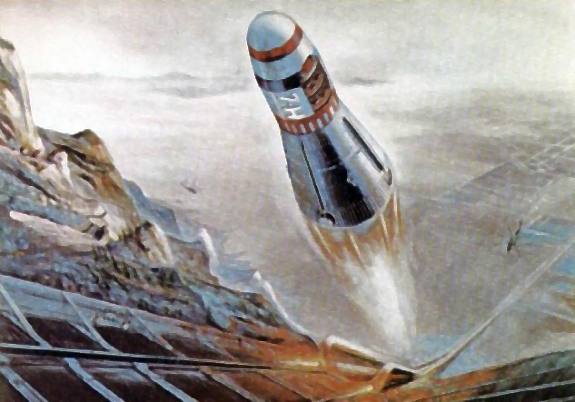
Hyperion
Credit: NASA
American manned spacecraft. Study 1966. Yet another of Philip Bono's single-stage-to-orbit designs of the 1960's, using a plug-nozzle engine for ascent and as a re-entry heat shield.
Hyperion would have taken 18,100 kg of payload or 110 passengers to orbit or on 45 minute flights to any point on earth. Hyperion used a sled for launch, which would have seriously hurt its utility. The sled gave a 300 m/s boost to the vehicle before it ascended to orbit. The sled would have 3 km of straight course, followed by 1 km up a mountainside, with a 3 G acceleration.
The aerospace transportation industry grew by leaps and bounds during the 1960s as bigger, faster and ever more capable aircraft and rockets became available. There appeared to be no limits to progress. In April 1963, NASA's Manned Spaceflight Center released a launch forecast for "Nova"-class heavy rockets in the 500-metric ton payload class. The expected need for such vehicles in 1975-90 included a 50-crew Moonbase (1975-), manned Mars flights (1981-), unmanned planetary craft (1979-), large space stations (1980-),and a "global transportation system" (1980) with 242 flights/year by 1990, and a "Nova military strike force" in 1976 (15 flights/year by 1981). Douglas Missile & Space Systems tried to capitalize on this by proposing a series of suborbital rockets capable of transporting 110-260 passengers at 25,000km/h. The "Hyperion" vehicle was truly remarkable since it would have been launched horizontally and landed vertically (HTVL) -- an extremely rare combination. The payload capability was 110 passengers or 18t of cargo. The takeoff mode was similar to contemporary HTHL TSTOs, i.e. a subsonic sled riding on a cushion of air. Hyperion would be traveling at 1100km/h as it left the sled at the end of the 3km launch rail. Unlike other Douglas SSTO concepts, Hyperion was fully reusable so it would have been ideally suited for flights from inland sites since no fuel tanks would be dropped during flight. The booster sled would literally have provided a "flying start" which greatly reduced the SSTO dry mass. Unfortunately, the Hyperion launch system also required a 1.7 km high mountain so Douglas mostly regarded the concept as an experimental vehicle.
Douglas expected that the vehicle would cost $1.5 billion to develop (=$8 billion at 1999 economic conditions), and the cost per seat would have been $3000 -- or $15000-16000 in 1999.
Characteristics
Crew Size: 110.
Gross mass: 470,000 kg (1,030,000 lb).
Height: 31.00 m (101.00 ft).
Thrust: 6,158.00 kN (1,384,373 lbf).
--------------------------------------------------------------------------------
--------------------------------------------------------------------------------
Associated Countries •USA
--------------------------------------------------------------------------------
See also •Low earth orbit
•Manned
•Manned spacecraft
--------------------------------------------------------------------------------
Associated Launch Vehicles •Hyperion SSTO American sled-launched SSTO VTOVL orbital launch vehicle. Yet another of Philip Bono's single-stage-to-orbit designs of the 1960's, using a plug-nozzle engine for ascent and as a re-entry heat shield. Hyperion would have taken 18,100 kg of payload or 110 passengers to orbit or on 45 minute flights to any point on earth. Hyperion used a sled for launch, which would have seriously hurt its utility. The sled gave a 300 m/s boost to the vehicle before it ascended to orbit. The sled would have 3 km of straight course, followed by 1 km up a mountainside, with a 3 G acceleration. More...
--------------------------------------------------------------------------------
Associated Manufacturers and Agencies •Douglas American manufacturer of rockets, spacecraft, and rocket engines. Boeing Huntington Beach, Huntington Beach, CA, USA. More...
--------------------------------------------------------------------------------
Bibliography •Gatland, Kenneth and Bono, Philip, Frontiers of Space, Macmillan, New York, 1969.
--------------------------------------------------------------------------------
Hyperion SSTO Images
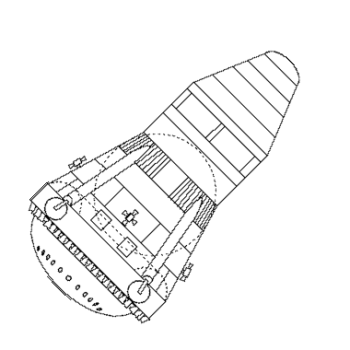
Hyperion SSTO
Hyperion SSTO Launch Vehicle
Credit: © Mark Wade
*****************************************************************
Ithacus
From astronautix.com:
Ithacus
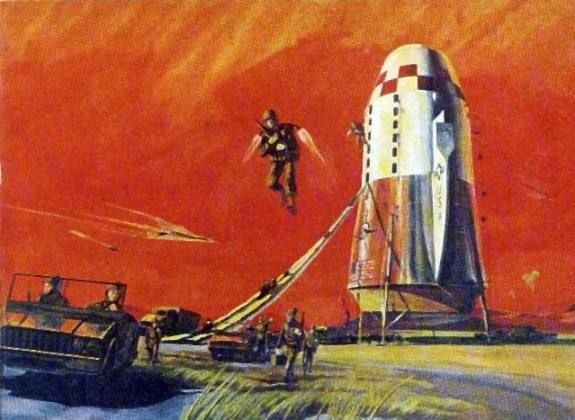
Ithacus Assault
Credit: NASA
American manned spacecraft. Study 1966. Adaptation of Phillip Bono's enormous ROMBUS plug-nozzle semi-single-stage-orbit launch vehicle as a 1,200 soldier intercontinental troop transport.
An adaptation of Phillip Bono's enormous ROMBUS plug-nozzle semi-single-stage-orbit launch vehicle as a 1,200 soldier intercontinental troop transport!! The recoverable vehicle would re-enter, using its actively-cooled plug nozzle as a heat shield.
Douglas also proposed a military VTVL SSTO for transporting troops and cargo -- the "Ithacus." The Ithacus plan was apparently inspired by general Wallace M. Greene, who proposed a rapid-strike battalion of 1200 soldiers. These "rocket commandos" would have been deployed by an intercontinental rocket so the need for overseas US Army bases might be greatly reduced. The gigantic 6400-metric ton "Ithacus Sr." was supposed to serve this strategic need.
The basic configuration was very similar to ROMBUS, i.e. eight hydrogen drop tanks + rocket-powered vertical landing using a plug-nozzle aerospike engine. The landed weight would have been about 500t. One of the biggest problem was returning the 64m tall vehicle back to the launch site. Self-ferry was out of the question since the rocket would have produced a liftoff thrust of 80200KN -- way too high without a custom-built launch pad with sound suppression, water cooling etc.. Shorter "hops" of a few hundred kilometers would however have been possible so the plan was to fly the partially fueled vehicle to a coastal harbor. Ithacus Sr. would be transported by a Saturn-type "crawler" onto a barge for return to the United States.
The smaller "Ithacus Jr." version would have had an intercontinental cargo capability of 33.5t or 260 soldiers. Douglas proposed to launch two Ithacus Jr. vehicles from an Enterprise-class nuclear aircraft carrier, which also would have produced liquid oxygen and hydrogen propellant from seawater. Power for the electrolysis process would have been taken from the carrier's nuclear reactor: 112MW would have been required to produce 1150t of oxygen and 164t of hydrogen from 1470t of water. The rocketships would be stored inside hangars. One Ithacus Jr. would serve as a troop carrier while the other would deploy unmanned cargo to the same military site. The Ithacus Jr. vehicles would land 600 meters apart to deploy a fully armed group of 260 soldiers.
Characteristics
Crew Size: 1200.
Gross mass: 6,363,000 kg (14,028,000 lb).
Height: 64.00 m (209.00 ft).
Thrust: 80,228.00 kN (18,035,971 lbf).
--------------------------------------------------------------------------------
--------------------------------------------------------------------------------
Associated Countries •USA
--------------------------------------------------------------------------------
See also •Low earth orbit
•Manned spacecraft
•Manned
--------------------------------------------------------------------------------
Associated Launch Vehicles •Ithacus American SSTO VTOVL orbital launch vehicle. An adaptation of Phillip Bono's enormous ROMBUS plug-nozzle semi-single-stage-orbit launch vehicle as a 1,200 soldier intercontinental troop transport!! The recoverable vehicle would re-enter, using its actively-cooled plug nozzle as a heat shield. More...
--------------------------------------------------------------------------------
Associated Manufacturers and Agencies •Douglas American manufacturer of rockets, spacecraft, and rocket engines. Boeing Huntington Beach, Huntington Beach, CA, USA. More...
--------------------------------------------------------------------------------
Bibliography •Gatland, Kenneth and Bono, Philip, Frontiers of Space, Macmillan, New York, 1969.
--------------------------------------------------------------------------------
Ithacus Images
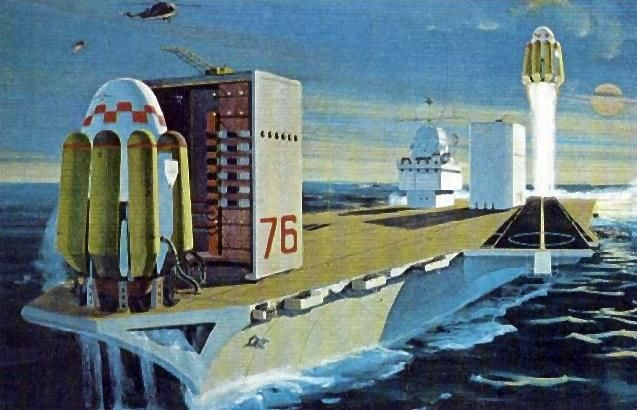
Ithacus Launch from
Credit: NASA
--------------------------------------------------------------------------------
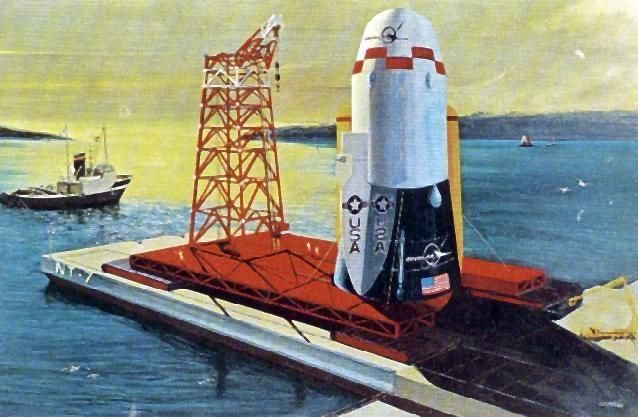
Ithacus Recovery
Credit: NASA
--------------------------------------------------------------------------------
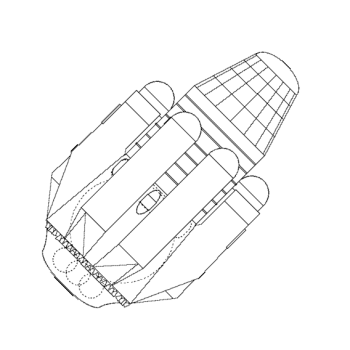
Ithacus
Credit: © Mark Wade
***************************************************************
Pegasus VTOVL
Pegasus VTOVL
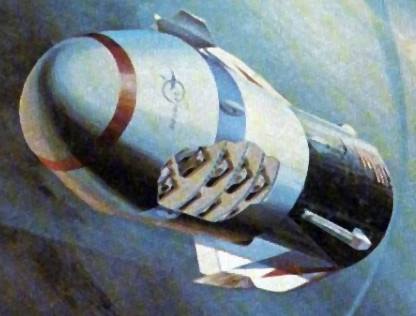
Pegasus Reentry
Credit: NASA
American manned spacecraft. Study 1966. Bono design for semi-single-stage-to-orbit ballistic VTOVL launch vehicle.
Drop tanks were shed on the way to orbit. Pegasus could deliver either a Saturn V-size payload to LEO or 172 passengers and their luggage the 12,000 km from Vandenberg to Singapore in 39 minutes.
The "Pegasus" was a Saturn V-class intercontinental rocket capable of transporting 170-260 passengers and 13-33.5t of cargo at 25,000km/h, or 90t to a 560km low Earth orbit. It would have been available in the 1980s and reduced the travel time from New York to Bombay from 22 hours to only 40 minutes. In Phil Bono's words:
"the SST would be just a small step in the direction of reducing transit time, whereas rocket-propelled vehicles would provide the ultimate in sub-orbital speed for transportation on the Earth's surface. The space age has equipped us with the technology for transporting emergency equipment to any disaster area on Earth in the time it would take for a bus ride across town, despite the conditions of aircraft runways upon arrival. In addition, diplomats, heads of state, chiefs of staff, as well as business executives, could be transported in person to consult, confer, inspect, decide and to lead in a manner currently impossible from distant shores, even with the aid from television."
Pegasus would have carried most of its hydrogen fuel in expendable drop tanks; hardly advisable for a low-cost suborbital launcher but necessary in order to improve the maneuverability of the rocket during reentry and landing since the vehicle then could be made much lighter and smaller. The projected gross liftoff mass was 1520t and the landing weight only 148t. The emergency landing procedure required all eight tanks to be jettisoned before the vehicle made an emergency landing on inflatable pontoons. Pegasus would have carried sixteen 1170KN thrust aerospike rocket modules so the engine-out safety would have been fairly good since only four engines were required for landing. The expected landing accuracy was only 1.6 * 3.2 kilometers so the spaceport would have to be located in a 5km wide uninhabited area for safe launch and landing operations.
Pegasus atmospheric reentry. The combined heatshield + plug nozzle rocket engine would be cooled by circulating liquid hydrogen fuel at the base of the vehicle. The intercontinental passenger version would incorporate fins between the external liquid hydrogen tanks to restrict reentry decelerations to a safe maximum of 2.5-3 g's. Pegasus would have been launched from spaceports which, by the 1980s, were expected to be established near most key cities throughout the world. Off-shore launch platforms were another possibility. Douglas estimated that the Pegasus would cost $3 billion (1964 $s -- $16.1B at 1999 rates) to develop, and the operational vehicles would cost $34M (=$183M in 1999 )per copy if two dozen were built. The first operational Pegasus would have cost $63 million (=$338M in 1999) to produce. According to Phil Bono, "we cannot afford to dismiss the rocket transport as a far-fetched impractical pipe dream. We must design today as if the next 10 years had already passed..."
Characteristics
Crew Size: 172.
Gross mass: 1,520,000 kg (3,350,000 lb).
Height: 34.80 m (114.10 ft).
Thrust: 18,730.00 kN (4,210,670 lbf).
--------------------------------------------------------------------------------
--------------------------------------------------------------------------------
Associated Countries •USA
--------------------------------------------------------------------------------
See also •Low earth orbit
•Manned
•Manned spacecraft
--------------------------------------------------------------------------------
Associated Launch Vehicles •Pegasus VTOVL American SSTO VTOVL orbital launch vehicle. Bono design for semi-single-stage-to-orbit ballistic VTOVL launch vehicle. Drop tanks were shed on the way to orbit. Pegasus could deliver either a Satun V-size payload to LEO or 172 passengers and their luggage the 12,000 km from Vandenberg to Singapore in 39 minutes. More...
--------------------------------------------------------------------------------
Associated Manufacturers and Agencies •Douglas American manufacturer of rockets, spacecraft, and rocket engines. Boeing Huntington Beach, Huntington Beach, CA, USA. More...
--------------------------------------------------------------------------------
Bibliography •Gatland, Kenneth and Bono, Philip, Frontiers of Space, Macmillan, New York, 1969.
•"Pegasus", Space World, 1964/December/p.20.
--------------------------------------------------------------------------------
Pegasus VTOVL Images
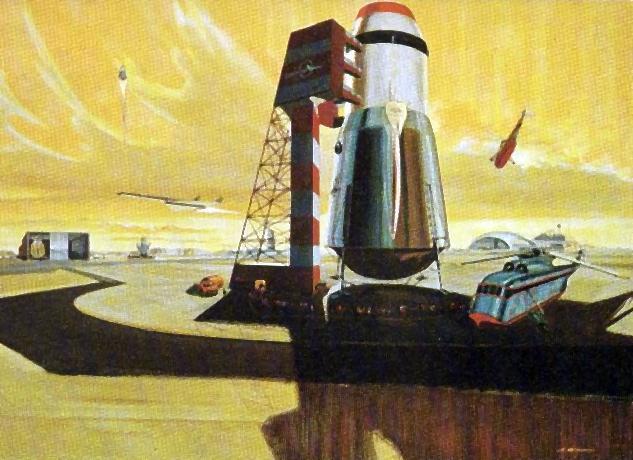
Pegasus Landing
Credit: NASA
--------------------------------------------------------------------------------
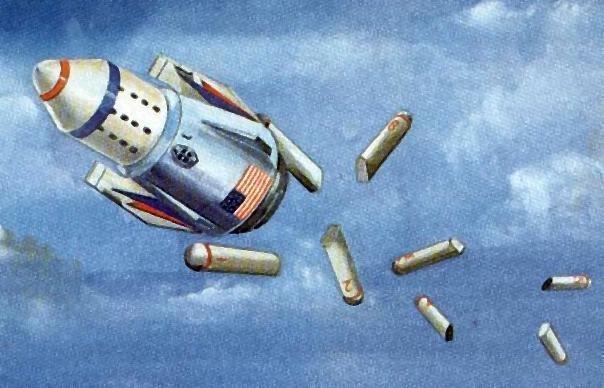
Pegasus Abort
Credit: NASA
--------------------------------------------------------------------------------
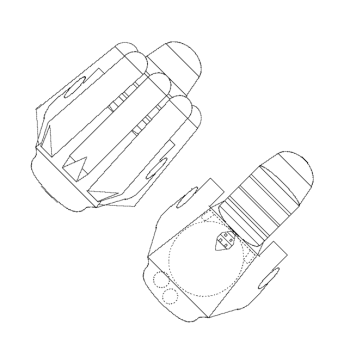
Pegasus SSTO
Pegasus SSTO Launch Vehicle Cutaway
Credit: © Mark Wade
****************************************************************
Convair Shuttlecraft
From astronautix.com:
Convair Shuttlecraft
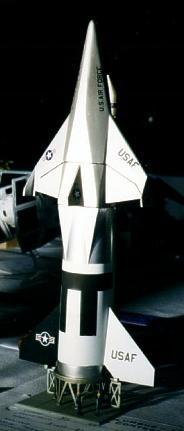
Convair Shuttlecraft
Kraft Ehricke-designed Convair Shuttlecraft
American manned spaceplane. Study 1962. Convair concept for a winged shuttle vehicle, early 1960's.
--------------------------------------------------------------------------------
--------------------------------------------------------------------------------
Associated Countries •USA
--------------------------------------------------------------------------------
See also •Manned
•Space station orbit
•Spaceplane
•US Rocketplanes
--------------------------------------------------------------------------------
Associated Manufacturers and Agencies •Convair American manufacturer of rockets, spacecraft, and rocket engines. Convair, USA. More...
--------------------------------------------------------------------------------
--------------------------------------------------------------------------------
Convair Shuttlecraft Chronology
--------------------------------------------------------------------------------
1992 June 10 - . 00:00 GMT - . Launch Site: Cape Canaveral. Launch Complex: Cape Canaveral LC36B. LV Family: Atlas. Launch Vehicle: Atlas IIA. LV Configuration: Atlas IIA AC-105 / Centaur II 8105. •Intelsat K - . Mass: 2,928 kg (6,455 lb). Nation: International. Agency: Intelsat. Manufacturer: Lockheed Martin. Program: Intelsat. Class: Communications. Type: Civilian communications satellite. Spacecraft: AS 5000. USAF Sat Cat: 21989 . COSPAR: 1992-032A. Apogee: 35,793 km (22,240 mi). Perigee: 35,781 km (22,233 mi). Inclination: 0.1000 deg. Period: 1,436.10 min. Stationed at 21.5 deg W. Intelsat K is a single spacecraft purchased to meet critical requirements for Ku-band capacity over the Atlantic region, driven primarily by international broadcasters. The satellite was purchased from GE Americom while under construction (as Satcom K4) and required extensive payload modifications. Spacecraft: Based on GE 5000 series bus.3-axis stabilised using magnetotorquers. Hydrazine propulsion system. Two large solar panels with 1-axis articulation provide 4800 W BOL.4 50 Ahr NiH batteries. Payload: 16 Ku-band transponders which can be configured into 32 high quality television channels. Permits access from ground antennas 1.2 meters dia. and smaller. Launch vehicle put payload into geosynchronous transfer orbit with GCS trajectory option. Positioned in geosynchronous orbit at 21 deg W in 1992-1999 As of 6 September 2001 located at 21.54 deg W drifting at 0.011 deg W per day. As of 2007 Mar 10 located at 160.51W drifting at 11.137W degrees per day.
--------------------------------------------------------------------------------
Convair Shuttlecraft Images
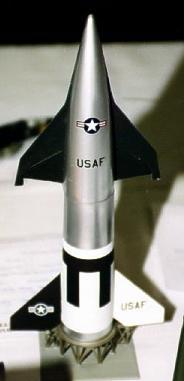
Convair Shuttlecraft
Kraft Ehricke-designed Convair Shuttlecraft
*********************************************************************
Douglas Astro
From astronautix.com:
Douglas Astro
American manned spaceplane. Study 1962. The Douglas "Astro" was a VTHL TSTO system designed for launching space station crews and cargo by the 1968-70 period.
A key requirement was that off-the-shelf technologies must be used, e.g. existing M-1, J-2 and RL-10 engines from the Saturn and Nova expendable launch vehicle programs.
Both stages were manned and employed lifting-body configurations. The (empty/gross) mass fraction was quite high (0.89 for the boooster,0.844 for the orbiter) and the designers attributed this to the thick-wing lifting body configuration which resulted in less weight due to lower stresses and thermal loads during reentry. After separating from the orbiter at an altitude of 82km, the booster would make an unpowered landing 830km from the launch site since it has no jet engines for atmospheric cruise. The flight rate assumptions were quite high: 240 flights per year for a fleet of 12 boosters & 24 orbiters with a turnaround time between missions of less than 18 days. A mobile launcher erector would eliminate the need for large gantries. The planned service life was 100 flights for the orbiter and 200 flights for the booster. The engines would have been capable of 50 firings between major overhaul (the airframes would last up to 300 flights). Development cost: $1.2 billion (1964 dollars -- $6.45B in FY 1999). Marginal cost per mission: $1.5M (=$41/lb at 1964 economic conditions; $485/kg in 1999).
Characteristics
Crew Size: 1.
Gross mass: 407,870 kg (899,190 lb).
Height: 49.00 m (160.00 ft).
--------------------------------------------------------------------------------
--------------------------------------------------------------------------------
Associated Countries •USA
--------------------------------------------------------------------------------
See also •Low earth orbit
•Manned
•Spaceplane
•US Rocketplanes
--------------------------------------------------------------------------------
Associated Launch Vehicles •Douglas Astro American winged orbital launch vehicle. The Douglas "Astro" was a VTHL TSTO system designed for launching space station crews and cargo by the 1968-70 period. A key requirement was that off-the-shelf technologies must be used, e.g. existing M-1, J-2 and RL-10 engines from the Saturn and Nova expendable launch vehicle programs. More...
--------------------------------------------------------------------------------
Associated Manufacturers and Agencies •Douglas American manufacturer of rockets, spacecraft, and rocket engines. Boeing Huntington Beach, Huntington Beach, CA, USA. More...
--------------------------------------------------------------------------------
Bibliography •Root & Fuller, "ASTRO Concept", Astronautics & Aeronautics, 1964/January/p.42.
*****************************************************************
Martin Astrorocket
Martin Astrorocket
American manned spaceplane. Study 1962. Early two-stage-to-orbit shuttle study, using storable propellants, Dynasoar-configuration delta wing orbiter.
Both NASA and the military investigated various reusable TSTO launch vehicle concepts during the early 1960s. In November 1962, the heads of the military and civilian future space transportation efforts signed an agreement to coordinate their hypersonic research vehicle programs. The U.S. Air Force initially was very interested in airbreathing HTHL SSTO aerospaceplanes -- General Dynamics and North American received $1.5-million contracts for preliminary USAF concept studies in June 1963 and the Department of Defense had spent some $46 million on advanced airbreathing vehicle research by FY 1963 -- but quickly concluded that scramjets and other propulsion systems were not yet sufficiently lightweight and efficient for single-stage vehicles.
Airbreathing propulsion and rocket propulsion on HTHL TSTO boosters, on the other hand, would be bigger since they require large wings and huge hydrogen fuel tanks and consequently have a higher dry mass which translates to higher cost. For these reasons, NASA preferred all-rocket TSTO boosters for its "Space Transporter" class of vehicle, since the required engines already had been developed for the Saturn program. The Space Transporter studies were based on the following specifications: (1) 10 passengers + crew of 2 with 3,000kg of cargo to LEO, (2) reduced payload into polar orbit, (3) maximum acceleration of three G, (4) 95% mission reliability and 99.9% probability of passenger survival, and (5) launch rate options of four, eight and sixteen per month over an operational period of 10 years.
In general, the 1960s RLV studies were focused on mission/technology requirements rather than detailed vehicle design. NASA's main priorities for the 1970s were large space stations and manned lunar & planetary missions; the reusable "space transporters" and post-Saturn heavy-lift rockets were simply regarded as necessary adjuncts to reduce the transportation cost. NASA initially regarded horizontally launched TSTOs as safer for passenger transport than vertically launched systems, since the launch G-loads were reduced and the abort characteristics were better than for VLs. However, the US Air Force had more flexibility with respect to G limits and was willing to consider both vertically and horizontally launched Aerospaceplanes.
Martin's "Astrorocket" would have been launched vertically because the designers felt the VL mode frees design from gross liftoff weight constraints (Martin regarded about 450t as the upper limit for a HTHL TSTO). The vertical takeoff mode would provide additional mission flexibility since no rocket powered horizontal launch sled would be required. The Astrorocket would have used storable propellants on both stages so consequently the liftoff weight was high: 1134t. The payload capability to a 555km orbit was only 2.27t and the crew of three astronauts could stay in orbit for up to two weeks. Both stages carry turbojets for powered landing and self-ferry between launch sites. The liftoff thrust would be 13,350KN and stage separation would occur at an altitude of 64km while the vehicle was traveling at 9600km/h.
Crew Size: 3.
Gross mass: 151,927 kg (334,941 lb).
Payload: 2,270 kg (5,000 lb).
Height: 30.00 m (98.00 ft).
Span: 20.00 m (65.00 ft).
Thrust: 2,150.00 kN (483,330 lbf).
--------------------------------------------------------------------------------
--------------------------------------------------------------------------------
Associated Countries •USA
--------------------------------------------------------------------------------
See also •Low earth orbit
•Manned
•Spaceplane
•US Rocketplanes
--------------------------------------------------------------------------------
Associated Launch Vehicles •Martin Astrorocket American winged orbital launch vehicle. Early two-stage-to-orbit shuttle study, using storable propellants, Dynasoar-configuration delta wing orbiter and booster. More...
--------------------------------------------------------------------------------
Associated Manufacturers and Agencies •Martin American manufacturer of rockets, spacecraft, and rocket engines. Martin Marietta Astronautics Group (1956), Denver, CO, USA. More...
--------------------------------------------------------------------------------
Bibliography •Gatland, Kenneth and Bono, Philip, Frontiers of Space, Macmillan, New York, 1969.
•Heppenheimer, T A, The Space Shuttle Decision, NASA History Office, NASA SP-4221, 1999.
•"Space Transporter Study", Spaceflight, 1965/p.124.
******************************************************************
Lockheed Space Taxi
From astronautix.com:
Lockheed Space Taxi
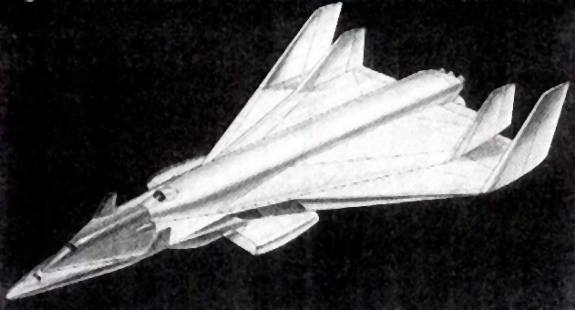
Recoverable Booster
Credit: NASA
American manned spaceplane. Study 1963. Lockheed investigated the economics of reusable launch vehicles for crews and light space station cargo during the early 1960s. Lockheed proposed a new reusable 10-man spaceplane as a follow-on to the Apollo CSM.
Lockheed investigated the economics of reusable launch vehicles for crews and light space station cargo during the early 1960s. Anticipated space activities in the 1970s included a two-phase Earth-orbital space station program, a lunar base, and early Mars mission plus later Mars/Venus mission... Since the baseline "System I" 6-man Apollo CSM/Saturn-IB vehicle appeared to be uneconomical as a high-volume manned transportation system even if the crew capsule could be reused 10 times, Lockheed proposed a "System II" that would have retained the Saturn IB booster but replaced the Apollo with a new reusable 10-man spaceplane. This third stage spaceplane was standard for Systems III & IV as well.
The fully reusable options were a "System III" HTHL TSTO rocketplane & "System IV" airbreathing HTHL TSTO ramjet-rocketplane. System IV was otherwise identical to System III but used a different booster aircraft with in-flight LOX collection + ramjet propulsion Both vehicles would be launched from a ground accelerator sled and fly orbit-once-around missions to deploy the small DynaSoar-like interorbital third stage "space taxi" containing the crew & cargo.
The System III & IV requirements were as follows: 95% mission reliability (0.1% vehicle attrition rate). 2950kg payload & 10 passenger capability. 7.5 day min. turnaround between missions (11-23 days nominal). Mission life of 500 flights. Flight rates of 100-300 missions per year in 1973-80. The estimated costs were in the $6.8M (50 flts/yr.)-$1.275M (400 flts/yr.) range. These figures were in FY 1964 dollars; the inflation-adjusted cost in 1999 would be $6.85M - $36.5M per flight. System III & System IV appeared to be equally cost competitive, but the development cost/risk would be lower for the all-rocket booster concept depicted above.
As for the low flight rate options, System II would have cost $0.6 billion (1964 $) for 250 passengers/year vs. $0.95 billion for the System I Saturn/Apollo since the manned spacecraft could be reused 500 times vs. only ten reuses for the Apollo capsule.
Masses: System III booster (161.750t dry / 646.823t gross) & orbiter (33.475t / 167.376t). Orbiter would perform "orbit once around" after deploying Dyna Soar type mini-shuttle (7166kg / 12700kg). System IV was otherwise identical but used a different booster aircraft with in-flight LOX collection + ramjet propulsion (113.4 t / 217.724t mass).
Crew Size: 10.
--------------------------------------------------------------------------------
Associated Countries •USA
--------------------------------------------------------------------------------
See also •Low earth orbit
•Manned
•Spaceplane
•US Rocketplanes
--------------------------------------------------------------------------------
Associated Launch Vehicles •Recoverable Booster Systems for Orbital Logistics American winged orbital launch vehicle. Lockheed investigated the economics of reusable launch vehicles for crews and light space station cargo during the early 1960s. Anticipated manned space activities in the 1970s included a two-phase Earth-orbital space station program, a lunar base, an early Mars mission, plus later Mars/Venus missions. Lockheed proposed four possible launch systems to support the scenario, ranging from System I, a 6-man Apollo CSM/Saturn-IB vehicle, to a fully reusable System IV with a ramjet-rocket booster. More...
--------------------------------------------------------------------------------
Associated Manufacturers and Agencies •Lockheed American manufacturer of rockets, spacecraft, and rocket engines. Lockheed Martin, Sunnyvale, CA, USA. More...
--------------------------------------------------------------------------------
Bibliography •Bailey & Kelly, "Potential of Recoverable Booster Systems for Orbital Logistics", Astronautics & Aeronautics, 1964/January/p.54.
***********************************************************************
Lockheed RTTOCV
From astronautix.com:
Lockheed RTTOCV
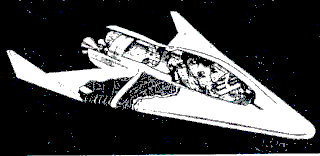
Lockheed RTTOCV
Credit: NASA
American manned spaceplane. Study 1963. In 1962 NASA funded studies with several contractors on Operations and Logistics for Space Stations.
Lockheed proposed a two-stage winged vehicle based on a 1958 contract conducted together with Hughes under a classified Air Force program. The booster would be vertically launched but land horizontally at conventional airfields.
In June 1962, NASA's Marshall Space Flight Center awarded an 18-month contract worth $428,000 to Lockheed for studying a "Reusable Ten-Ton Orbital Carrier Vehicle." The goal was to develop a ten-passenger HTHL TSTO spaceplane that "should be compatible with the philosophy used in the development of supersonic commercial jet aircraft and should offer a potential commercial application in the late 1970s, such as operating the vehicle over global distances for surface-to-surface transport of cargo and personnel." Lockheed's initial HTHL TSTO spaceplane concept from 1963 was an outgrowth of an earlier classified USAF study begun in 1958 with Hughes. The fully reusable orbiter of the later study would have been carried by a sled-launched booster rocket rocketplane.
Characteristics
Crew Size: 1.
--------------------------------------------------------------------------------
--------------------------------------------------------------------------------
Associated Countries •USA
--------------------------------------------------------------------------------
See also •Low earth orbit
•Manned
•Spaceplane
•US Rocketplanes
--------------------------------------------------------------------------------
Associated Launch Vehicles •Lockheed RTTOCV American sled-launched winged orbital launch vehicle. Lockheed’s HTHL TSTO spaceplane concept from 1963, an outgrowth of an earlier USAF study with Hughes. The fully reusable orbiter would have been carried by a sled-launched booster rocket rocketplane. More...
--------------------------------------------------------------------------------
Associated Manufacturers and Agencies •Lockheed American manufacturer of rockets, spacecraft, and rocket engines. Lockheed Martin, Sunnyvale, CA, USA. More...
--------------------------------------------------------------------------------
Bibliography •Jenkins, Dennis R,, Space Shuttle: The History of the National Space Transportation System : The First 100 Missions, Third edition, Voyageur Press, 2001.
*****************************************************************
McDonnell Spaceplane (1963)
McDonnell Spaceplane 1963
American manned spaceplane. Study 1963. In June 1962 NASA funded studies with several contractors on Operations and Logistics for Space Stations.
McDonnell's study was dated 20 March 1963 and proposed three alternatives, all of which could be boosted by either a Titan 3M or Saturn IB Launch Vehicle, and all of which would be equipped with aft-mounted docking systems. The first two were variants of McDonnell's Gemini capsule, but the third was a new winged spaceplane, capable of accommodating two crew plus four passengers.
Crew Size: 6.
Gross mass: 14,000 kg (30,000 lb).
--------------------------------------------------------------------------------
--------------------------------------------------------------------------------
Associated Countries •USA
--------------------------------------------------------------------------------
See also •Low earth orbit
•Manned
•Spaceplane
•US Rocketplanes
--------------------------------------------------------------------------------
Associated Manufacturers and Agencies •NASA American agency overseeing development of rockets and spacecraft. National Aeronautics and Space Administration, USA, USA. More...
•McDonnell American manufacturer of spacecraft. McDonnell, St Louis, USA. More...
--------------------------------------------------------------------------------
Bibliography •Jenkins, Dennis R,, Space Shuttle: The History of the National Space Transportation System : The First 100 Missions, Third edition, Voyageur Press, 2001.
****************************************************************
North American Aviation RTTOCV
From astronautix.com:
NAA RTTOCV
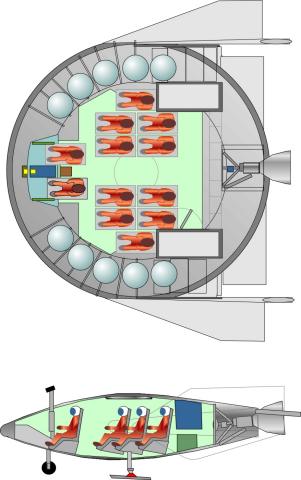
NAA Orbital Transfer
Credit: Mark Wade
American manned spaceplane. Study 1963. North American Aviation's Reusable Ten Ton Orbital Carrier Vehicle design of 1963 had as a standard payload a lenticular 12-man orbital transfer vehicle spaceplane for space station logistics and crew transfer.
The final concept resulting from the $342,000 NASA study contract had launch mass of 11,340 kg. Two crew plus ten passengers, or a mix of passengers and cargo, could be carried. The saucer-shaped body merged aft into a thick planform with vertical stabilizers along the base. Yaw thrusters were at the tops of the vertical stabilizers, the pitch thrusters above the engine bay, and the roll thrusters at the roots of the stabilizers. A single gimbaled engine provided thrust for orbital maneuvers. Crew access was via a 1.2-m-diameter hatch at the top of the saucer. The pilot used a periscope for forward vision during landing. Horizontal landing was on skid main gear and a wheeled nose gear, as on the same company's X-15.
The sled-launched rocketplane's booster was 32.9 meters long and would have been powered by a single F-1 and two H-1 kerosene/LOX engines plus turbojets for return to base. The winged second stage was mounted on top of the booster and would have used three liquid oxygen/hydrogen J-2 engines. This fully reusable system would have had a gross liftoff weight of 548,847 kg.
Crew Size: 12.
Gross mass: 11,340 kg (25,000 lb).
--------------------------------------------------------------------------------
--------------------------------------------------------------------------------
Associated Countries •USA
--------------------------------------------------------------------------------
See also •Lenticular Vehicles For a brief period in 1959-1964, NASA and the US Air Force actively considered launching manned flying saucers into space. Although very much in tune with UFO mania and science fiction films of the times, the concept lost out to other aerodynamic concepts. More...
•Low earth orbit
•Manned
•Spaceplane
•US Rocketplanes
--------------------------------------------------------------------------------
Associated Launch Vehicles •NAA RTTOCV NASA awarded a "Reusable Ten Ton Orbital Carrier Vehicle" contract worth $342,000 to North American Aviation. The final concept from 1963 was quite similar to Lockheed’s System III design. The launch capability was 11,340 kg (25,000 lb) and the standard payload would have consisted of a small lenticular 12-man orbital transfer vehicle spaceplane for space station logistics and crew transfer. More...
--------------------------------------------------------------------------------
Associated Manufacturers and Agencies •North American American manufacturer of rockets, spacecraft, and rocket engines. North American, Palmdale, El Segundo. Downey, CA, USA More...
--------------------------------------------------------------------------------
Bibliography •Jenkins, Dennis R,, Space Shuttle: The History of the National Space Transportation System : The First 100 Missions, Third edition, Voyageur Press, 2001.
--------------------------------------------------------------------------------
NAA RTTOCV Images
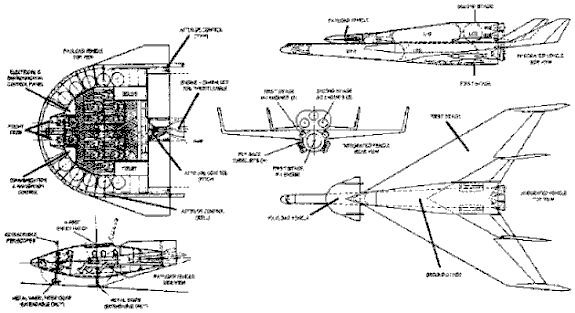
Reusable Ten Ton Orb
Credit: NASA
*********************************************************************
Lockheed Re-Usable Orbital Carrier
From astronautix.com:
Reusable Orbital Carrier
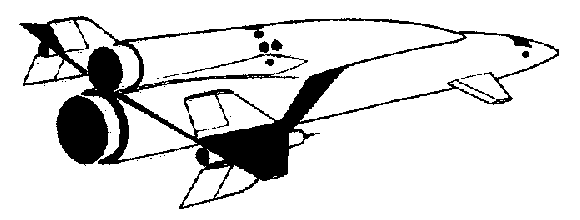
ROC
Reusable Orbital Carrier
Credit: NASA
American manned spaceplane. Study 1964. The Reusable Orbital Carrier (ROC) was a 1964 Lockheed study of a sled-launched HTHL TSTO. The second stage orbiter rocketplane would use Lox/LH2 propulsion to orbit and make an unpowered glide return and landing.
The vehicle could deliver ten passengers+3000kg to a space station.
The Reusable Orbital Carrier (ROC) was a 1964 Lockheed study of a sled-launched HTHL TSTO. The booster's rocket engines would burn liquid oxygen and jet fuel while small turbojets would be used for landing approach. The 2nd stage orbiter rocketplane would make an unpowered glide return and landing. LOX, LH2 rocket propulsion would be used on the second stage. The gross liftoff weight would be about 453t and the vehicle could deliver ten passengers+3000kg to a space station. Alternatively, an unmanned 11,340kg payload could be carried.
The expected development cost was $3 billion at 1964 rates ($16 billion at 1999 rates) and the cost per flight was $100/lb, or $1,184/kg at 1999 rates. NASA saw the small 10-passenger ROC as a vehicle to prove out in small scale a larger 100-passenger "Reusable Aero-Space Transport" for the 1980s. RAST would use high-pressure oxygen+hydrogen engines and turbojets for landing on both stages. The booster rocketplane would be a multipurpose vehicle, with the 2nd stage being tailored to fit specific applications such as global passenger transportation, NASA space station resupply or military missions. The designers felt ballistic "recoverable" vertically launched vehicles make more sense for launching heavy unmanned one-way payloads, since the recovery system (chutes or retrorockets) would cost less. On the other hand, winged vehicles and lifting recovery would be safer for returning manned crews. The marginal cost per flight and the turnaround time would also be less, if the flight rates were high enough.
Characteristics
Crew Size: 10.
Payload: 3,000 kg (6,600 lb).
--------------------------------------------------------------------------------
--------------------------------------------------------------------------------
Associated Countries •USA
--------------------------------------------------------------------------------
See also •Low earth orbit
•Manned
•Spaceplane
•US Rocketplanes
--------------------------------------------------------------------------------
Associated Launch Vehicles •Reusable Orbital Carrier American sled-launched winged orbital launch vehicle. The Reusable Orbital Carrier (ROC) was a 1964 Lockheed study of a sled-launched HTHL TSTO. The booster's rocket engines would burn liquid oxygen and jet fuel while small turbojets would be used for landing approach. The 2nd stage orbiter rocketplane would make an unpowered glide return and landing. LOX, LH2 rocket propulsion would be used on the second stage. The gross liftoff weight would be about 453t and the vehicle could deliver ten passengers+3000kg to a space station. Alternatively, an unmanned 11,340kg payload could be carried. More...
--------------------------------------------------------------------------------
Associated Manufacturers and Agencies •Lockheed American manufacturer of rockets, spacecraft, and rocket engines. Lockheed Martin, Sunnyvale, CA, USA. More...
--------------------------------------------------------------------------------
Bibliography •Osmun, "Reusable Launch Vehicles", Space/Aeronautics, 1964/September/p.43.
•Heppenheimer, T A, The Space Shuttle Decision, NASA History Office, NASA SP-4221, 1999.
•"Space Transporter Study", Spaceflight, 1965/p.124.
From astronautix:
SAINT II

X-23 with X-24
X-23 with Orbital X-24
Credit: Lockheed Martin
American manned combat spacecraft. Cancelled 1961. At the beginning of the 1960's, the USAF examined a number of approaches to a manned spacecraft designed to rendezvous with, inspect, and then, if necessary, destroy enemy satellites.
The preferred design was a lifting body, a development line that led eventually to the X-24C spaceplane. The project was quickly squelched by USAF X-20 Dyna-Soar advocates (or possibly it went deep black). Alternatives publicly mentioned as replacements for the mission were the Dynasoar with special payload provisions, or Gemini variants with combat provisions.
On 19 May 1961 the USAF Space Systems Division (SSD) announced its SAINT-II manned space interceptor concept. This was to be a two-man lifting body spacecraft, using subsystems developed for the SAINT-I unmanned satellite inspector. SAINT-II would be capable of orbital rendezvous and limited space logistics missions. Launch vehicle would be a Titan II equipped with a Chariot LF2/Hydrazine high-performance third stage. Following an unmanned test flight in early 1964, 12 manned orbital missions would be conducted, including both near- and far-earth flights. DynaSoar I was seen as not being capable of the mission, due to its limited payload, and restriction to low earth orbits. SSD estimated the total cost for SAINT-II to be $413.8 million, to be spent in the period FY1962 - FY1965.
Naturally this program was seen by USAF DynaSoar advocates as a threat to their project. In October 1961 a USAF management group criticized the proposed SAINT II program as unrealistic in schedule and budget. Not only was it eventually cancelled, but also the USAF later prohibited further use of the SAINT designation in proposals.
--------------------------------------------------------------------------------
--------------------------------------------------------------------------------
Associated Countries •USA
--------------------------------------------------------------------------------
See also •Combat spacecraft
•Manned
•US Rocketplanes
--------------------------------------------------------------------------------
Bibliography •Pesavento, Peter, "Russian Space Shuttle Projects 1957-1994", Spaceflight, 1995, Volume 37, page 226.
•Godwin, Robert, editor, Dyna-Soar: Hypersonic Strategic Weapons System, Collector's Guide Publishing, Ontario, Canada, 2003..
--------------------------------------------------------------------------------
--------------------------------------------------------------------------------
SAINT II Chronology
--------------------------------------------------------------------------------
1958 June 19 - . •USAF issues requirement for an anti-satellite system - . Nation: USA. Spacecraft: SAINT; SAINT II. Summary: USAF GOR-170 is issued for a system to inspect and destroy enemy satellites..
--------------------------------------------------------------------------------
December 1959 - . •Public furor as the USAF fails to properly identify unidentified object in space. - . Nation: USA. Spacecraft: SAINT; SAINT II. Summary: This humilitation led the Air Force to pursue its SAINT ASAT project..
--------------------------------------------------------------------------------
1959 December 21 - . •STL completes study on an anti-satellite systems - . Nation: USA. Spacecraft: SAINT; SAINT II. Summary: Space Technologies Laboratory completed a USAF-funded feasibility study on the topic..
--------------------------------------------------------------------------------
1960 January 31 - . •RCA completes study on an anti-satellite system - . Nation: USA. Spacecraft: SAINT; SAINT II. Summary: Radio Corporation of America completes an ARPA-funded feasibility study on the topic..
--------------------------------------------------------------------------------
1960 February 5 - . •US National Security Council briefed on USAF plans for an anti-satellite system. - . Nation: USA. Spacecraft: SAINT; SAINT II. Summary: Assistant Air Force Secretary Joseph Charyk presented the plan..
--------------------------------------------------------------------------------
1960 April 5 - . •Conditional approval for SAINT development. - . Nation: USA. Spacecraft: SAINT; SAINT II. As usual, Herbert York, McNamara's Director of Defense, Research, and Engineering, was hostile to the concept. It was approved only on the condition that Gerneral Schriever, Commander of the Air Research and Development Command, fund it from the existing budget by cutting back other programmes.
--------------------------------------------------------------------------------
1960 April 21 - . •SAINT System Development Requirement issued. - . Nation: USA. Spacecraft: SAINT; SAINT II. Summary: It also allowed follow-on manned systems to be pursued..
--------------------------------------------------------------------------------
1960 July 15 - . •USAF Air Staff approval for SAINT development - . Nation: USA. Spacecraft: SAINT; SAINT II.
--------------------------------------------------------------------------------
1960 August 23 - . •Final Department of Defense approval for SAINT development. - . Nation: USA. Spacecraft: SAINT; SAINT II.
--------------------------------------------------------------------------------
1960 November 1 - . •Chelomei R winged manned spacecraft project starts - . Nation: USSR. Related Persons: Chelomei; Myasishchev; Tsybin. Class: Manned. Type: Manned spaceplane. Spacecraft: Raketoplan; SAINT; SAINT II. Immediately after cancellation of similar projects at Myasishchev and Tsybin bureaus, Chelomei's new bureau is assigned to build equivalent of US Dynasoar / Saint II. Winged manned spacecraft for interception, inspection, and destruction of US satellites up to 290 km altitude. Two man crew, 24 hour mission duration, large aft drag brakes.
--------------------------------------------------------------------------------
1961 March 16 - . •Project SAINT Phase I contract signed by RCA. - . Nation: USA. Spacecraft: SAINT; SAINT II. Project SAINT (SAtellite INTerceptor) was a large and still deeply classified US Air Force program begun in the late 1950's covering a wide range of technologies for interception, inspection, and destruction of enemy spacecraft. After studies in the 1950’s. The Phase I development contract was let to Radio Corporation of America. Saint Phase I would have weighted 1,100 kg and been launched by Atlas D/Agena B.
--------------------------------------------------------------------------------
1961 May 29 - . •Advanced Re-entry Technology program and SAINT II program. - . Nation: USA. Spacecraft: Dynasoar; Asset; SAINT; SAINT II. Summary: The Space Systems Division completed two development plans for an Advanced Re-entry Technology program and a SAINT II program..
--------------------------------------------------------------------------------
1962 October - . •Project SAINT cut back. - . Nation: USA. Spacecraft: SAINT; SAINT II. Summary: Project SAINT satellite interceptor project was cut back, leading to its eventually cancellation. The spacecraft would have rendezvoused with hostile satellites, inspected them with television cameras, and then disabled them..
--------------------------------------------------------------------------------
December 1962 - . •SAINT is cancelled. - . Nation: USA. Spacecraft: SAINT; SAINT II. Summary: The unmanned SAINT-I and manned SAINT-II anti-satellite systems are cancelled..
--------------------------------------------------------------------------------
1963 November 18 - . •Dyna-Soar use for satellite inspection missions (SAINT II) studied. - . Nation: USA. Spacecraft: Dynasoar; SAINT II. Summary: With the assistance of the Boeing Company; the Minneapolis-Honeywell Regulator Company, and the Air Force Aerospace Medical Division, the X-20 office completed a report for SSD on the use of Dyna-Soar for satellite inspection missions..
****************************************************************
U.S. Navy Project Mer
From astronautix.com:
Project Mer
American manned spacecraft. Study 1956. April 1958 design of the Navy Bureau of Aeronautics for a Manned Earth Reconnaissance spacecraft - consisting of a cylindrical fuselage and telescoping, inflatable wings for flight in the atmosphere.
In April 1958 the Navy Bureau of Aeronautics presented to ARPA the results of its manned satellite study, "MER I" (for "Manned Earth Reconnaissance"). This approach called for an orbital mission in a novel vehicle - a cylinder with spherical ends. After being fired into orbit by a two-stage booster system, the ends would expand laterally along two structural, telescoping beams to make a delta-wing, inflated glider with a rigid nose section. The configuration met the principal MER I requirement: the vehicle would be controllable from booster burnout to landing on water. Fabric construction obviously implied a new departure in the design of reentry vehicles. At ARPA's direction the Bureau of Aeronautics undertook a second study (MER II), this one to be done jointly on contract by Convair, manufacturer of the Atlas, and the Goodyear Aircraft Corporation. The Convair-Goodyear study group did not make its report until December. At that time it reasserted the feasibility of the lifting pneumatic vehicle but relegated the inflation of the craft to the post-entry portion of the mission. By December, however, Project Mercury already was moving ahead steadily under NASA. Funds for a MER III phase (model studies) were not forthcoming from the Defense Department, and the intriguing MER concept became a little-known aspect of the prehistory of manned orbital flight. Project MER was by far the most ambitious of the manned space flight proposals made by the military in 1958. Its emphasis on new hardware and new techniques meant it really had little chance for approval then.
AKA: Manned Earth Reconnaissance.
--------------------------------------------------------------------------------
--------------------------------------------------------------------------------
Associated Countries •USA
--------------------------------------------------------------------------------
See also •Man-In-Space-Soonest The beginning of the Air Force's Man-In-Space-Soonest program has been traced back to a staff meeting of General Thomas S Power, Commander of the Air Research and Development Command (ARDC) in Baltimore on 15 February 1956. Power wanted studies to begin on manned space vehicles that would follow the X-15 rocketplane. These were to include winged and ballistic approaches - the ballistic rocket was seen as being a militarily useful intercontinental troop and cargo vehicle. More...
•Manned
•Manned spacecraft
--------------------------------------------------------------------------------
Associated Launch Vehicles •Atlas The Atlas rocket, originally developed as America's first ICBM, was the basis for most early American space exploration and was that country's most successful medium-lift commercial launch vehicle. It launched America's first astronaut into orbit; the first generations of spy satellites; the first lunar orbiters and landers; the first probes to Venus, Mars, Mercury, Jupiter, and Saturn; and was America's most successful commercial launcher of communications satellites. Its innovative stage-and-a-half and 'balloon tank' design provided the best dry-mass fraction of any launch vehicle ever built. It was retired in 2004 after 576 launches in a 47-year career. More...
•Atlas D American intercontinental ballistic missile. Rocket used both as a space launcher and ICBM. More...
--------------------------------------------------------------------------------
Associated Manufacturers and Agencies •USN American agency overseeing development of rockets, spacecraft, and rocket engines. USN Joint Task Force 7, USA. More...
•Convair American manufacturer of rockets, spacecraft, and rocket engines. Convair, USA. More...
•Goodyear American manufacturer of spacecraft. Goodyear, USA. More...
--------------------------------------------------------------------------------
Bibliography •Grimwood, James M., Project Mercury: A Chronology, NASA Special Publication-4001.
--------------------------------------------------------------------------------
--------------------------------------------------------------------------------
Project Mer Chronology
--------------------------------------------------------------------------------
1958 During the Year - . •Project Mer - . Nation: USA. Spacecraft: Project Mer. The Navy space proposal to the Advanced Research Projects Agency, during the tenure of that organization's interim surveillance over national space projects, was known as Project Mer. This plan involved sending a man into orbit in a collapsible pneumatic glider. The glider and its occupant would be launched in the nose of a giant launch vehicle. After the glider had been placed in orbit, it would be inflated, and then flown down to a water landing.
****************************************************************
Bell Hypersonic Rocket Transport
From asronautix.com:
Bell Hypersonic Rocket Transport 1960
American manned rocketplane. Study 1960. In March 1960 Bell proposed a revised hypersonic transport design based on its work on boost-glide vehicles during the 1950's. There was no government or airline interest in the concept.
The aircraft would be powered by six turbo-ramjets. The engines would function as turbojets until the aircraft reached 15,000 m, then convert to ramjet performance and take the aircraft to Mach 5.2 at 36,500 m. The same aircraft, equipped with launch rails, would serve as the launch platform for a suborbital rocket-powered spaceplane based on Bell's Dynasoar design. This would reach a maximum altitude of 64 km and 6.7 km/s. After reaching its intercontinental destination, auxiliary turbojets would be used for subsonic flight in the area of the destination airfield and landing.
--------------------------------------------------------------------------------
--------------------------------------------------------------------------------
Associated Countries •USA
--------------------------------------------------------------------------------
See also •Manned
•Rocketplane
•US Rocketplanes
--------------------------------------------------------------------------------
Associated Manufacturers and Agencies •Bell American manufacturer of rockets, spacecraft, and rocket engines. ARC Liquid Propellant Division, Niagara Falls, NY, USA. More...
*****************************************************************
North American X-15-A-3
From astronautix.com:
X-15A-3

X-15/B-70
American manned spaceplane. Cancelled 1962. It had been proposed that X-15 number 3 would be reworked to install a delta wing and designed to reach Mach 8.
The wing's leading edge would be of columbium, with Rene-41 alloy on the upper and lower surfaces. The rocketplane could have been air-launched from the top of an XB-70, but even when dropped from a subsonic B-52 would be capable of reaching Mach 8. The project was cancelled when X-15 number 3 was destroyed in a crash.
Spacecraft delta v: 2,400 m/s (7,800 ft/sec).
Gross mass: 25,000 kg (55,000 lb).
Unfuelled mass: 5,000 kg (11,000 lb).
Height: 19.05 m (62.49 ft).
Span: 6.80 m (22.30 ft).
Thrust: 262.45 kN (59,000 lbf).
Specific impulse: 276 s.
--------------------------------------------------------------------------------
--------------------------------------------------------------------------------
Associated Countries •USA
--------------------------------------------------------------------------------
Associated Engines •XLR99 Thiokol Lox/Ammonia rocket engine. 262.4 kN. Out of production. Isp=276s. The first large, man-rated, throttleable, restartable liquid propellant rocket engine, boosted the X-15A. First flight 1959. More...
--------------------------------------------------------------------------------
See also •Manned
•Spaceplane
•Suborbital
•US Rocketplanes
--------------------------------------------------------------------------------
Associated Manufacturers and Agencies •USAF American agency overseeing development of rockets and spacecraft. United States Air Force, USA. More...
•North American American manufacturer of rockets, spacecraft, and rocket engines. North American, Palmdale, El Segundo. Downey, CA, USA More...
•USAF American agency. USAF, USA. More...
--------------------------------------------------------------------------------
Associated Propellants •Lox/Ammonia
--------------------------------------------------------------------------------
Bibliography •Jenkins, Dennis R,, Space Shuttle: The History of the National Space Transportation System : The First 100 Missions, Third edition, Voyageur Press, 2001.
*******************************************************************
CIA Project Isinglass
Isinglass
American manned spaceplane. Study 1965. CIA air-launched, rocket-powered high speed manned vehicle project of 1965-1968 that developed basic technologies used in later shuttle and reusable launch vehicle programs.
Isinglass was a the code name for a heavily classified, rocket-powered, air-launched aircraft studied by the Central Intelligence Agency as an A-12/SR-71 successor in 1964-1968. It studied several technologies that would be used in later shuttle and SSTO programs, including light weight structure and thermal protection system concepts, and diffusion-bonded titanium. A large scale test article was built and tested to prove these features.
The initial Isinglass concept was designed by General Dynamics based on work done on the B-58-launched Super Hustler, Fish, and Kingfish programs of 1958-1960. The new design would use modern avionics and hydraulics systems developed for the F-111 and be capable of air-breathing Mach 4-5 cruise at 30 km altitude. The General Dynamics feasibility study was completed in the fall of 1964. An alternative design completed by McDonnell Aircraft in 1965 was designated Project Rheinberry. This would be a rocket-powered aircraft launched from a B-52 and flying at a near-orbital speed of Mach 20 at 60 km altitude. For the CIA's reconnaissance purposes, neither of these concepts were found to have advantages in comparison to satellites to justify the high development and operating risk and costs.
Crew Size: 1.
--------------------------------------------------------------------------------
--------------------------------------------------------------------------------
Associated Countries •USA
--------------------------------------------------------------------------------
See also •Low earth orbit
•Manned
•Spaceplane
•US Rocketplanes
******************************************************************
TRW Janus
From astronautix.com:
Janus
American manned spaceplane. Study 1965. This TRW design of 1965 used a unique concept - a lifting body main stage, that provided both ascent propulsion and re-entry protection.
The main stage was 8.17 m long, had a 4.88 m wingspan, and could accommodate a payload of 24.4 cubic meter volume. The 7300 kg gross weight included a separable manned aircraft of 6.4 m length, which had a delta wing of 62 degrees sweep and a span of 4.05 m. The vertical stabilizers turned down from each wingtip. After the mother ship had re-entered the atmosphere, the manned aircraft would separate at Mach 0.6 and 9150 m altitude. Equipped with a single turbojet, a nosewheel, and aft landing skids, it would proceed to a landing at a conventional airfield. The main stage would descend to earth under a parachute and be recovered for re-use. The whole concept was strikingly similar to Chelomei's Kosmoplan, which was being cancelled in the Soviet Union just as the TRW study was completed.
Gross mass: 7,300 kg (16,000 lb).
Height: 8.17 m (26.80 ft).
Span: 4.88 m (16.01 ft).
--------------------------------------------------------------------------------
--------------------------------------------------------------------------------
Associated Countries •USA
--------------------------------------------------------------------------------
See also •Low earth orbit
•Manned
•Spaceplane
•US Rocketplanes
--------------------------------------------------------------------------------
Associated Manufacturers and Agencies •TRW American manufacturer of rockets, spacecraft, and rocket engines. TRW Corporation, Redondo Beach, CA, USA. More...
--------------------------------------------------------------------------------
Bibliography •Jenkins, Dennis R,, Space Shuttle: The History of the National Space Transportation System : The First 100 Missions, Third edition, Voyageur Press, 2001.
********************************************************************
Salkeld Shuttle
From astronautix.com:
Salkeld Shuttle
American manned spaceplane. Study 1965. 1965 concept for a manned spaceplane equipped with drop tanks, which would be air-launched from a C-5
In 1965 Salkeld sketched out possible configurations for air-launched manned shuttle vehicles that could be air-launched from a C-5 transport. These would have two drop tanks, but otherwise be single-stage-to-orbit designs. Payload would be a crew of two, plus three passengers, and minor additional equipment and supplies required for in-orbit repair of satellites. The basic design would be ejected out of the rear cargo door of a C-5. A more capable growth design would be carried externally on the centre pylon of a double C-5 or new-design giant transporter. These concepts were very similar to those pursued in the Soviet Union in the late 1970's. However neither NASA nor the Air Force was interested in pursuing the concept.
--------------------------------------------------------------------------------
--------------------------------------------------------------------------------
Associated Countries •USA
--------------------------------------------------------------------------------
See also •Manned
•Spaceplane
*******************************************************************
Hyperion SSTO
From astronautix.com:
Hyperion SSTO

Hyperion
Credit: NASA
American manned spacecraft. Study 1966. Yet another of Philip Bono's single-stage-to-orbit designs of the 1960's, using a plug-nozzle engine for ascent and as a re-entry heat shield.
Hyperion would have taken 18,100 kg of payload or 110 passengers to orbit or on 45 minute flights to any point on earth. Hyperion used a sled for launch, which would have seriously hurt its utility. The sled gave a 300 m/s boost to the vehicle before it ascended to orbit. The sled would have 3 km of straight course, followed by 1 km up a mountainside, with a 3 G acceleration.
The aerospace transportation industry grew by leaps and bounds during the 1960s as bigger, faster and ever more capable aircraft and rockets became available. There appeared to be no limits to progress. In April 1963, NASA's Manned Spaceflight Center released a launch forecast for "Nova"-class heavy rockets in the 500-metric ton payload class. The expected need for such vehicles in 1975-90 included a 50-crew Moonbase (1975-), manned Mars flights (1981-), unmanned planetary craft (1979-), large space stations (1980-),and a "global transportation system" (1980) with 242 flights/year by 1990, and a "Nova military strike force" in 1976 (15 flights/year by 1981). Douglas Missile & Space Systems tried to capitalize on this by proposing a series of suborbital rockets capable of transporting 110-260 passengers at 25,000km/h. The "Hyperion" vehicle was truly remarkable since it would have been launched horizontally and landed vertically (HTVL) -- an extremely rare combination. The payload capability was 110 passengers or 18t of cargo. The takeoff mode was similar to contemporary HTHL TSTOs, i.e. a subsonic sled riding on a cushion of air. Hyperion would be traveling at 1100km/h as it left the sled at the end of the 3km launch rail. Unlike other Douglas SSTO concepts, Hyperion was fully reusable so it would have been ideally suited for flights from inland sites since no fuel tanks would be dropped during flight. The booster sled would literally have provided a "flying start" which greatly reduced the SSTO dry mass. Unfortunately, the Hyperion launch system also required a 1.7 km high mountain so Douglas mostly regarded the concept as an experimental vehicle.
Douglas expected that the vehicle would cost $1.5 billion to develop (=$8 billion at 1999 economic conditions), and the cost per seat would have been $3000 -- or $15000-16000 in 1999.
Characteristics
Crew Size: 110.
Gross mass: 470,000 kg (1,030,000 lb).
Height: 31.00 m (101.00 ft).
Thrust: 6,158.00 kN (1,384,373 lbf).
--------------------------------------------------------------------------------
--------------------------------------------------------------------------------
Associated Countries •USA
--------------------------------------------------------------------------------
See also •Low earth orbit
•Manned
•Manned spacecraft
--------------------------------------------------------------------------------
Associated Launch Vehicles •Hyperion SSTO American sled-launched SSTO VTOVL orbital launch vehicle. Yet another of Philip Bono's single-stage-to-orbit designs of the 1960's, using a plug-nozzle engine for ascent and as a re-entry heat shield. Hyperion would have taken 18,100 kg of payload or 110 passengers to orbit or on 45 minute flights to any point on earth. Hyperion used a sled for launch, which would have seriously hurt its utility. The sled gave a 300 m/s boost to the vehicle before it ascended to orbit. The sled would have 3 km of straight course, followed by 1 km up a mountainside, with a 3 G acceleration. More...
--------------------------------------------------------------------------------
Associated Manufacturers and Agencies •Douglas American manufacturer of rockets, spacecraft, and rocket engines. Boeing Huntington Beach, Huntington Beach, CA, USA. More...
--------------------------------------------------------------------------------
Bibliography •Gatland, Kenneth and Bono, Philip, Frontiers of Space, Macmillan, New York, 1969.
--------------------------------------------------------------------------------
Hyperion SSTO Images

Hyperion SSTO
Hyperion SSTO Launch Vehicle
Credit: © Mark Wade
*****************************************************************
Ithacus
From astronautix.com:
Ithacus

Ithacus Assault
Credit: NASA
American manned spacecraft. Study 1966. Adaptation of Phillip Bono's enormous ROMBUS plug-nozzle semi-single-stage-orbit launch vehicle as a 1,200 soldier intercontinental troop transport.
An adaptation of Phillip Bono's enormous ROMBUS plug-nozzle semi-single-stage-orbit launch vehicle as a 1,200 soldier intercontinental troop transport!! The recoverable vehicle would re-enter, using its actively-cooled plug nozzle as a heat shield.
Douglas also proposed a military VTVL SSTO for transporting troops and cargo -- the "Ithacus." The Ithacus plan was apparently inspired by general Wallace M. Greene, who proposed a rapid-strike battalion of 1200 soldiers. These "rocket commandos" would have been deployed by an intercontinental rocket so the need for overseas US Army bases might be greatly reduced. The gigantic 6400-metric ton "Ithacus Sr." was supposed to serve this strategic need.
The basic configuration was very similar to ROMBUS, i.e. eight hydrogen drop tanks + rocket-powered vertical landing using a plug-nozzle aerospike engine. The landed weight would have been about 500t. One of the biggest problem was returning the 64m tall vehicle back to the launch site. Self-ferry was out of the question since the rocket would have produced a liftoff thrust of 80200KN -- way too high without a custom-built launch pad with sound suppression, water cooling etc.. Shorter "hops" of a few hundred kilometers would however have been possible so the plan was to fly the partially fueled vehicle to a coastal harbor. Ithacus Sr. would be transported by a Saturn-type "crawler" onto a barge for return to the United States.
The smaller "Ithacus Jr." version would have had an intercontinental cargo capability of 33.5t or 260 soldiers. Douglas proposed to launch two Ithacus Jr. vehicles from an Enterprise-class nuclear aircraft carrier, which also would have produced liquid oxygen and hydrogen propellant from seawater. Power for the electrolysis process would have been taken from the carrier's nuclear reactor: 112MW would have been required to produce 1150t of oxygen and 164t of hydrogen from 1470t of water. The rocketships would be stored inside hangars. One Ithacus Jr. would serve as a troop carrier while the other would deploy unmanned cargo to the same military site. The Ithacus Jr. vehicles would land 600 meters apart to deploy a fully armed group of 260 soldiers.
Characteristics
Crew Size: 1200.
Gross mass: 6,363,000 kg (14,028,000 lb).
Height: 64.00 m (209.00 ft).
Thrust: 80,228.00 kN (18,035,971 lbf).
--------------------------------------------------------------------------------
--------------------------------------------------------------------------------
Associated Countries •USA
--------------------------------------------------------------------------------
See also •Low earth orbit
•Manned spacecraft
•Manned
--------------------------------------------------------------------------------
Associated Launch Vehicles •Ithacus American SSTO VTOVL orbital launch vehicle. An adaptation of Phillip Bono's enormous ROMBUS plug-nozzle semi-single-stage-orbit launch vehicle as a 1,200 soldier intercontinental troop transport!! The recoverable vehicle would re-enter, using its actively-cooled plug nozzle as a heat shield. More...
--------------------------------------------------------------------------------
Associated Manufacturers and Agencies •Douglas American manufacturer of rockets, spacecraft, and rocket engines. Boeing Huntington Beach, Huntington Beach, CA, USA. More...
--------------------------------------------------------------------------------
Bibliography •Gatland, Kenneth and Bono, Philip, Frontiers of Space, Macmillan, New York, 1969.
--------------------------------------------------------------------------------
Ithacus Images

Ithacus Launch from
Credit: NASA
--------------------------------------------------------------------------------

Ithacus Recovery
Credit: NASA
--------------------------------------------------------------------------------

Ithacus
Credit: © Mark Wade
***************************************************************
Pegasus VTOVL
Pegasus VTOVL

Pegasus Reentry
Credit: NASA
American manned spacecraft. Study 1966. Bono design for semi-single-stage-to-orbit ballistic VTOVL launch vehicle.
Drop tanks were shed on the way to orbit. Pegasus could deliver either a Saturn V-size payload to LEO or 172 passengers and their luggage the 12,000 km from Vandenberg to Singapore in 39 minutes.
The "Pegasus" was a Saturn V-class intercontinental rocket capable of transporting 170-260 passengers and 13-33.5t of cargo at 25,000km/h, or 90t to a 560km low Earth orbit. It would have been available in the 1980s and reduced the travel time from New York to Bombay from 22 hours to only 40 minutes. In Phil Bono's words:
"the SST would be just a small step in the direction of reducing transit time, whereas rocket-propelled vehicles would provide the ultimate in sub-orbital speed for transportation on the Earth's surface. The space age has equipped us with the technology for transporting emergency equipment to any disaster area on Earth in the time it would take for a bus ride across town, despite the conditions of aircraft runways upon arrival. In addition, diplomats, heads of state, chiefs of staff, as well as business executives, could be transported in person to consult, confer, inspect, decide and to lead in a manner currently impossible from distant shores, even with the aid from television."
Pegasus would have carried most of its hydrogen fuel in expendable drop tanks; hardly advisable for a low-cost suborbital launcher but necessary in order to improve the maneuverability of the rocket during reentry and landing since the vehicle then could be made much lighter and smaller. The projected gross liftoff mass was 1520t and the landing weight only 148t. The emergency landing procedure required all eight tanks to be jettisoned before the vehicle made an emergency landing on inflatable pontoons. Pegasus would have carried sixteen 1170KN thrust aerospike rocket modules so the engine-out safety would have been fairly good since only four engines were required for landing. The expected landing accuracy was only 1.6 * 3.2 kilometers so the spaceport would have to be located in a 5km wide uninhabited area for safe launch and landing operations.
Pegasus atmospheric reentry. The combined heatshield + plug nozzle rocket engine would be cooled by circulating liquid hydrogen fuel at the base of the vehicle. The intercontinental passenger version would incorporate fins between the external liquid hydrogen tanks to restrict reentry decelerations to a safe maximum of 2.5-3 g's. Pegasus would have been launched from spaceports which, by the 1980s, were expected to be established near most key cities throughout the world. Off-shore launch platforms were another possibility. Douglas estimated that the Pegasus would cost $3 billion (1964 $s -- $16.1B at 1999 rates) to develop, and the operational vehicles would cost $34M (=$183M in 1999 )per copy if two dozen were built. The first operational Pegasus would have cost $63 million (=$338M in 1999) to produce. According to Phil Bono, "we cannot afford to dismiss the rocket transport as a far-fetched impractical pipe dream. We must design today as if the next 10 years had already passed..."
Characteristics
Crew Size: 172.
Gross mass: 1,520,000 kg (3,350,000 lb).
Height: 34.80 m (114.10 ft).
Thrust: 18,730.00 kN (4,210,670 lbf).
--------------------------------------------------------------------------------
--------------------------------------------------------------------------------
Associated Countries •USA
--------------------------------------------------------------------------------
See also •Low earth orbit
•Manned
•Manned spacecraft
--------------------------------------------------------------------------------
Associated Launch Vehicles •Pegasus VTOVL American SSTO VTOVL orbital launch vehicle. Bono design for semi-single-stage-to-orbit ballistic VTOVL launch vehicle. Drop tanks were shed on the way to orbit. Pegasus could deliver either a Satun V-size payload to LEO or 172 passengers and their luggage the 12,000 km from Vandenberg to Singapore in 39 minutes. More...
--------------------------------------------------------------------------------
Associated Manufacturers and Agencies •Douglas American manufacturer of rockets, spacecraft, and rocket engines. Boeing Huntington Beach, Huntington Beach, CA, USA. More...
--------------------------------------------------------------------------------
Bibliography •Gatland, Kenneth and Bono, Philip, Frontiers of Space, Macmillan, New York, 1969.
•"Pegasus", Space World, 1964/December/p.20.
--------------------------------------------------------------------------------
Pegasus VTOVL Images

Pegasus Landing
Credit: NASA
--------------------------------------------------------------------------------

Pegasus Abort
Credit: NASA
--------------------------------------------------------------------------------

Pegasus SSTO
Pegasus SSTO Launch Vehicle Cutaway
Credit: © Mark Wade
****************************************************************
Convair Shuttlecraft
From astronautix.com:
Convair Shuttlecraft

Convair Shuttlecraft
Kraft Ehricke-designed Convair Shuttlecraft
American manned spaceplane. Study 1962. Convair concept for a winged shuttle vehicle, early 1960's.
--------------------------------------------------------------------------------
--------------------------------------------------------------------------------
Associated Countries •USA
--------------------------------------------------------------------------------
See also •Manned
•Space station orbit
•Spaceplane
•US Rocketplanes
--------------------------------------------------------------------------------
Associated Manufacturers and Agencies •Convair American manufacturer of rockets, spacecraft, and rocket engines. Convair, USA. More...
--------------------------------------------------------------------------------
--------------------------------------------------------------------------------
Convair Shuttlecraft Chronology
--------------------------------------------------------------------------------
1992 June 10 - . 00:00 GMT - . Launch Site: Cape Canaveral. Launch Complex: Cape Canaveral LC36B. LV Family: Atlas. Launch Vehicle: Atlas IIA. LV Configuration: Atlas IIA AC-105 / Centaur II 8105. •Intelsat K - . Mass: 2,928 kg (6,455 lb). Nation: International. Agency: Intelsat. Manufacturer: Lockheed Martin. Program: Intelsat. Class: Communications. Type: Civilian communications satellite. Spacecraft: AS 5000. USAF Sat Cat: 21989 . COSPAR: 1992-032A. Apogee: 35,793 km (22,240 mi). Perigee: 35,781 km (22,233 mi). Inclination: 0.1000 deg. Period: 1,436.10 min. Stationed at 21.5 deg W. Intelsat K is a single spacecraft purchased to meet critical requirements for Ku-band capacity over the Atlantic region, driven primarily by international broadcasters. The satellite was purchased from GE Americom while under construction (as Satcom K4) and required extensive payload modifications. Spacecraft: Based on GE 5000 series bus.3-axis stabilised using magnetotorquers. Hydrazine propulsion system. Two large solar panels with 1-axis articulation provide 4800 W BOL.4 50 Ahr NiH batteries. Payload: 16 Ku-band transponders which can be configured into 32 high quality television channels. Permits access from ground antennas 1.2 meters dia. and smaller. Launch vehicle put payload into geosynchronous transfer orbit with GCS trajectory option. Positioned in geosynchronous orbit at 21 deg W in 1992-1999 As of 6 September 2001 located at 21.54 deg W drifting at 0.011 deg W per day. As of 2007 Mar 10 located at 160.51W drifting at 11.137W degrees per day.
--------------------------------------------------------------------------------
Convair Shuttlecraft Images

Convair Shuttlecraft
Kraft Ehricke-designed Convair Shuttlecraft
*********************************************************************
Douglas Astro
From astronautix.com:
Douglas Astro
American manned spaceplane. Study 1962. The Douglas "Astro" was a VTHL TSTO system designed for launching space station crews and cargo by the 1968-70 period.
A key requirement was that off-the-shelf technologies must be used, e.g. existing M-1, J-2 and RL-10 engines from the Saturn and Nova expendable launch vehicle programs.
Both stages were manned and employed lifting-body configurations. The (empty/gross) mass fraction was quite high (0.89 for the boooster,0.844 for the orbiter) and the designers attributed this to the thick-wing lifting body configuration which resulted in less weight due to lower stresses and thermal loads during reentry. After separating from the orbiter at an altitude of 82km, the booster would make an unpowered landing 830km from the launch site since it has no jet engines for atmospheric cruise. The flight rate assumptions were quite high: 240 flights per year for a fleet of 12 boosters & 24 orbiters with a turnaround time between missions of less than 18 days. A mobile launcher erector would eliminate the need for large gantries. The planned service life was 100 flights for the orbiter and 200 flights for the booster. The engines would have been capable of 50 firings between major overhaul (the airframes would last up to 300 flights). Development cost: $1.2 billion (1964 dollars -- $6.45B in FY 1999). Marginal cost per mission: $1.5M (=$41/lb at 1964 economic conditions; $485/kg in 1999).
Characteristics
Crew Size: 1.
Gross mass: 407,870 kg (899,190 lb).
Height: 49.00 m (160.00 ft).
--------------------------------------------------------------------------------
--------------------------------------------------------------------------------
Associated Countries •USA
--------------------------------------------------------------------------------
See also •Low earth orbit
•Manned
•Spaceplane
•US Rocketplanes
--------------------------------------------------------------------------------
Associated Launch Vehicles •Douglas Astro American winged orbital launch vehicle. The Douglas "Astro" was a VTHL TSTO system designed for launching space station crews and cargo by the 1968-70 period. A key requirement was that off-the-shelf technologies must be used, e.g. existing M-1, J-2 and RL-10 engines from the Saturn and Nova expendable launch vehicle programs. More...
--------------------------------------------------------------------------------
Associated Manufacturers and Agencies •Douglas American manufacturer of rockets, spacecraft, and rocket engines. Boeing Huntington Beach, Huntington Beach, CA, USA. More...
--------------------------------------------------------------------------------
Bibliography •Root & Fuller, "ASTRO Concept", Astronautics & Aeronautics, 1964/January/p.42.
*****************************************************************
Martin Astrorocket
Martin Astrorocket
American manned spaceplane. Study 1962. Early two-stage-to-orbit shuttle study, using storable propellants, Dynasoar-configuration delta wing orbiter.
Both NASA and the military investigated various reusable TSTO launch vehicle concepts during the early 1960s. In November 1962, the heads of the military and civilian future space transportation efforts signed an agreement to coordinate their hypersonic research vehicle programs. The U.S. Air Force initially was very interested in airbreathing HTHL SSTO aerospaceplanes -- General Dynamics and North American received $1.5-million contracts for preliminary USAF concept studies in June 1963 and the Department of Defense had spent some $46 million on advanced airbreathing vehicle research by FY 1963 -- but quickly concluded that scramjets and other propulsion systems were not yet sufficiently lightweight and efficient for single-stage vehicles.
Airbreathing propulsion and rocket propulsion on HTHL TSTO boosters, on the other hand, would be bigger since they require large wings and huge hydrogen fuel tanks and consequently have a higher dry mass which translates to higher cost. For these reasons, NASA preferred all-rocket TSTO boosters for its "Space Transporter" class of vehicle, since the required engines already had been developed for the Saturn program. The Space Transporter studies were based on the following specifications: (1) 10 passengers + crew of 2 with 3,000kg of cargo to LEO, (2) reduced payload into polar orbit, (3) maximum acceleration of three G, (4) 95% mission reliability and 99.9% probability of passenger survival, and (5) launch rate options of four, eight and sixteen per month over an operational period of 10 years.
In general, the 1960s RLV studies were focused on mission/technology requirements rather than detailed vehicle design. NASA's main priorities for the 1970s were large space stations and manned lunar & planetary missions; the reusable "space transporters" and post-Saturn heavy-lift rockets were simply regarded as necessary adjuncts to reduce the transportation cost. NASA initially regarded horizontally launched TSTOs as safer for passenger transport than vertically launched systems, since the launch G-loads were reduced and the abort characteristics were better than for VLs. However, the US Air Force had more flexibility with respect to G limits and was willing to consider both vertically and horizontally launched Aerospaceplanes.
Martin's "Astrorocket" would have been launched vertically because the designers felt the VL mode frees design from gross liftoff weight constraints (Martin regarded about 450t as the upper limit for a HTHL TSTO). The vertical takeoff mode would provide additional mission flexibility since no rocket powered horizontal launch sled would be required. The Astrorocket would have used storable propellants on both stages so consequently the liftoff weight was high: 1134t. The payload capability to a 555km orbit was only 2.27t and the crew of three astronauts could stay in orbit for up to two weeks. Both stages carry turbojets for powered landing and self-ferry between launch sites. The liftoff thrust would be 13,350KN and stage separation would occur at an altitude of 64km while the vehicle was traveling at 9600km/h.
Crew Size: 3.
Gross mass: 151,927 kg (334,941 lb).
Payload: 2,270 kg (5,000 lb).
Height: 30.00 m (98.00 ft).
Span: 20.00 m (65.00 ft).
Thrust: 2,150.00 kN (483,330 lbf).
--------------------------------------------------------------------------------
--------------------------------------------------------------------------------
Associated Countries •USA
--------------------------------------------------------------------------------
See also •Low earth orbit
•Manned
•Spaceplane
•US Rocketplanes
--------------------------------------------------------------------------------
Associated Launch Vehicles •Martin Astrorocket American winged orbital launch vehicle. Early two-stage-to-orbit shuttle study, using storable propellants, Dynasoar-configuration delta wing orbiter and booster. More...
--------------------------------------------------------------------------------
Associated Manufacturers and Agencies •Martin American manufacturer of rockets, spacecraft, and rocket engines. Martin Marietta Astronautics Group (1956), Denver, CO, USA. More...
--------------------------------------------------------------------------------
Bibliography •Gatland, Kenneth and Bono, Philip, Frontiers of Space, Macmillan, New York, 1969.
•Heppenheimer, T A, The Space Shuttle Decision, NASA History Office, NASA SP-4221, 1999.
•"Space Transporter Study", Spaceflight, 1965/p.124.
******************************************************************
Lockheed Space Taxi
From astronautix.com:
Lockheed Space Taxi

Recoverable Booster
Credit: NASA
American manned spaceplane. Study 1963. Lockheed investigated the economics of reusable launch vehicles for crews and light space station cargo during the early 1960s. Lockheed proposed a new reusable 10-man spaceplane as a follow-on to the Apollo CSM.
Lockheed investigated the economics of reusable launch vehicles for crews and light space station cargo during the early 1960s. Anticipated space activities in the 1970s included a two-phase Earth-orbital space station program, a lunar base, and early Mars mission plus later Mars/Venus mission... Since the baseline "System I" 6-man Apollo CSM/Saturn-IB vehicle appeared to be uneconomical as a high-volume manned transportation system even if the crew capsule could be reused 10 times, Lockheed proposed a "System II" that would have retained the Saturn IB booster but replaced the Apollo with a new reusable 10-man spaceplane. This third stage spaceplane was standard for Systems III & IV as well.
The fully reusable options were a "System III" HTHL TSTO rocketplane & "System IV" airbreathing HTHL TSTO ramjet-rocketplane. System IV was otherwise identical to System III but used a different booster aircraft with in-flight LOX collection + ramjet propulsion Both vehicles would be launched from a ground accelerator sled and fly orbit-once-around missions to deploy the small DynaSoar-like interorbital third stage "space taxi" containing the crew & cargo.
The System III & IV requirements were as follows: 95% mission reliability (0.1% vehicle attrition rate). 2950kg payload & 10 passenger capability. 7.5 day min. turnaround between missions (11-23 days nominal). Mission life of 500 flights. Flight rates of 100-300 missions per year in 1973-80. The estimated costs were in the $6.8M (50 flts/yr.)-$1.275M (400 flts/yr.) range. These figures were in FY 1964 dollars; the inflation-adjusted cost in 1999 would be $6.85M - $36.5M per flight. System III & System IV appeared to be equally cost competitive, but the development cost/risk would be lower for the all-rocket booster concept depicted above.
As for the low flight rate options, System II would have cost $0.6 billion (1964 $) for 250 passengers/year vs. $0.95 billion for the System I Saturn/Apollo since the manned spacecraft could be reused 500 times vs. only ten reuses for the Apollo capsule.
Masses: System III booster (161.750t dry / 646.823t gross) & orbiter (33.475t / 167.376t). Orbiter would perform "orbit once around" after deploying Dyna Soar type mini-shuttle (7166kg / 12700kg). System IV was otherwise identical but used a different booster aircraft with in-flight LOX collection + ramjet propulsion (113.4 t / 217.724t mass).
Crew Size: 10.
--------------------------------------------------------------------------------
Associated Countries •USA
--------------------------------------------------------------------------------
See also •Low earth orbit
•Manned
•Spaceplane
•US Rocketplanes
--------------------------------------------------------------------------------
Associated Launch Vehicles •Recoverable Booster Systems for Orbital Logistics American winged orbital launch vehicle. Lockheed investigated the economics of reusable launch vehicles for crews and light space station cargo during the early 1960s. Anticipated manned space activities in the 1970s included a two-phase Earth-orbital space station program, a lunar base, an early Mars mission, plus later Mars/Venus missions. Lockheed proposed four possible launch systems to support the scenario, ranging from System I, a 6-man Apollo CSM/Saturn-IB vehicle, to a fully reusable System IV with a ramjet-rocket booster. More...
--------------------------------------------------------------------------------
Associated Manufacturers and Agencies •Lockheed American manufacturer of rockets, spacecraft, and rocket engines. Lockheed Martin, Sunnyvale, CA, USA. More...
--------------------------------------------------------------------------------
Bibliography •Bailey & Kelly, "Potential of Recoverable Booster Systems for Orbital Logistics", Astronautics & Aeronautics, 1964/January/p.54.
***********************************************************************
Lockheed RTTOCV
From astronautix.com:
Lockheed RTTOCV

Lockheed RTTOCV
Credit: NASA
American manned spaceplane. Study 1963. In 1962 NASA funded studies with several contractors on Operations and Logistics for Space Stations.
Lockheed proposed a two-stage winged vehicle based on a 1958 contract conducted together with Hughes under a classified Air Force program. The booster would be vertically launched but land horizontally at conventional airfields.
In June 1962, NASA's Marshall Space Flight Center awarded an 18-month contract worth $428,000 to Lockheed for studying a "Reusable Ten-Ton Orbital Carrier Vehicle." The goal was to develop a ten-passenger HTHL TSTO spaceplane that "should be compatible with the philosophy used in the development of supersonic commercial jet aircraft and should offer a potential commercial application in the late 1970s, such as operating the vehicle over global distances for surface-to-surface transport of cargo and personnel." Lockheed's initial HTHL TSTO spaceplane concept from 1963 was an outgrowth of an earlier classified USAF study begun in 1958 with Hughes. The fully reusable orbiter of the later study would have been carried by a sled-launched booster rocket rocketplane.
Characteristics
Crew Size: 1.
--------------------------------------------------------------------------------
--------------------------------------------------------------------------------
Associated Countries •USA
--------------------------------------------------------------------------------
See also •Low earth orbit
•Manned
•Spaceplane
•US Rocketplanes
--------------------------------------------------------------------------------
Associated Launch Vehicles •Lockheed RTTOCV American sled-launched winged orbital launch vehicle. Lockheed’s HTHL TSTO spaceplane concept from 1963, an outgrowth of an earlier USAF study with Hughes. The fully reusable orbiter would have been carried by a sled-launched booster rocket rocketplane. More...
--------------------------------------------------------------------------------
Associated Manufacturers and Agencies •Lockheed American manufacturer of rockets, spacecraft, and rocket engines. Lockheed Martin, Sunnyvale, CA, USA. More...
--------------------------------------------------------------------------------
Bibliography •Jenkins, Dennis R,, Space Shuttle: The History of the National Space Transportation System : The First 100 Missions, Third edition, Voyageur Press, 2001.
*****************************************************************
McDonnell Spaceplane (1963)
McDonnell Spaceplane 1963
American manned spaceplane. Study 1963. In June 1962 NASA funded studies with several contractors on Operations and Logistics for Space Stations.
McDonnell's study was dated 20 March 1963 and proposed three alternatives, all of which could be boosted by either a Titan 3M or Saturn IB Launch Vehicle, and all of which would be equipped with aft-mounted docking systems. The first two were variants of McDonnell's Gemini capsule, but the third was a new winged spaceplane, capable of accommodating two crew plus four passengers.
Crew Size: 6.
Gross mass: 14,000 kg (30,000 lb).
--------------------------------------------------------------------------------
--------------------------------------------------------------------------------
Associated Countries •USA
--------------------------------------------------------------------------------
See also •Low earth orbit
•Manned
•Spaceplane
•US Rocketplanes
--------------------------------------------------------------------------------
Associated Manufacturers and Agencies •NASA American agency overseeing development of rockets and spacecraft. National Aeronautics and Space Administration, USA, USA. More...
•McDonnell American manufacturer of spacecraft. McDonnell, St Louis, USA. More...
--------------------------------------------------------------------------------
Bibliography •Jenkins, Dennis R,, Space Shuttle: The History of the National Space Transportation System : The First 100 Missions, Third edition, Voyageur Press, 2001.
****************************************************************
North American Aviation RTTOCV
From astronautix.com:
NAA RTTOCV

NAA Orbital Transfer
Credit: Mark Wade
American manned spaceplane. Study 1963. North American Aviation's Reusable Ten Ton Orbital Carrier Vehicle design of 1963 had as a standard payload a lenticular 12-man orbital transfer vehicle spaceplane for space station logistics and crew transfer.
The final concept resulting from the $342,000 NASA study contract had launch mass of 11,340 kg. Two crew plus ten passengers, or a mix of passengers and cargo, could be carried. The saucer-shaped body merged aft into a thick planform with vertical stabilizers along the base. Yaw thrusters were at the tops of the vertical stabilizers, the pitch thrusters above the engine bay, and the roll thrusters at the roots of the stabilizers. A single gimbaled engine provided thrust for orbital maneuvers. Crew access was via a 1.2-m-diameter hatch at the top of the saucer. The pilot used a periscope for forward vision during landing. Horizontal landing was on skid main gear and a wheeled nose gear, as on the same company's X-15.
The sled-launched rocketplane's booster was 32.9 meters long and would have been powered by a single F-1 and two H-1 kerosene/LOX engines plus turbojets for return to base. The winged second stage was mounted on top of the booster and would have used three liquid oxygen/hydrogen J-2 engines. This fully reusable system would have had a gross liftoff weight of 548,847 kg.
Crew Size: 12.
Gross mass: 11,340 kg (25,000 lb).
--------------------------------------------------------------------------------
--------------------------------------------------------------------------------
Associated Countries •USA
--------------------------------------------------------------------------------
See also •Lenticular Vehicles For a brief period in 1959-1964, NASA and the US Air Force actively considered launching manned flying saucers into space. Although very much in tune with UFO mania and science fiction films of the times, the concept lost out to other aerodynamic concepts. More...
•Low earth orbit
•Manned
•Spaceplane
•US Rocketplanes
--------------------------------------------------------------------------------
Associated Launch Vehicles •NAA RTTOCV NASA awarded a "Reusable Ten Ton Orbital Carrier Vehicle" contract worth $342,000 to North American Aviation. The final concept from 1963 was quite similar to Lockheed’s System III design. The launch capability was 11,340 kg (25,000 lb) and the standard payload would have consisted of a small lenticular 12-man orbital transfer vehicle spaceplane for space station logistics and crew transfer. More...
--------------------------------------------------------------------------------
Associated Manufacturers and Agencies •North American American manufacturer of rockets, spacecraft, and rocket engines. North American, Palmdale, El Segundo. Downey, CA, USA More...
--------------------------------------------------------------------------------
Bibliography •Jenkins, Dennis R,, Space Shuttle: The History of the National Space Transportation System : The First 100 Missions, Third edition, Voyageur Press, 2001.
--------------------------------------------------------------------------------
NAA RTTOCV Images

Reusable Ten Ton Orb
Credit: NASA
*********************************************************************
Lockheed Re-Usable Orbital Carrier
From astronautix.com:
Reusable Orbital Carrier

ROC
Reusable Orbital Carrier
Credit: NASA
American manned spaceplane. Study 1964. The Reusable Orbital Carrier (ROC) was a 1964 Lockheed study of a sled-launched HTHL TSTO. The second stage orbiter rocketplane would use Lox/LH2 propulsion to orbit and make an unpowered glide return and landing.
The vehicle could deliver ten passengers+3000kg to a space station.
The Reusable Orbital Carrier (ROC) was a 1964 Lockheed study of a sled-launched HTHL TSTO. The booster's rocket engines would burn liquid oxygen and jet fuel while small turbojets would be used for landing approach. The 2nd stage orbiter rocketplane would make an unpowered glide return and landing. LOX, LH2 rocket propulsion would be used on the second stage. The gross liftoff weight would be about 453t and the vehicle could deliver ten passengers+3000kg to a space station. Alternatively, an unmanned 11,340kg payload could be carried.
The expected development cost was $3 billion at 1964 rates ($16 billion at 1999 rates) and the cost per flight was $100/lb, or $1,184/kg at 1999 rates. NASA saw the small 10-passenger ROC as a vehicle to prove out in small scale a larger 100-passenger "Reusable Aero-Space Transport" for the 1980s. RAST would use high-pressure oxygen+hydrogen engines and turbojets for landing on both stages. The booster rocketplane would be a multipurpose vehicle, with the 2nd stage being tailored to fit specific applications such as global passenger transportation, NASA space station resupply or military missions. The designers felt ballistic "recoverable" vertically launched vehicles make more sense for launching heavy unmanned one-way payloads, since the recovery system (chutes or retrorockets) would cost less. On the other hand, winged vehicles and lifting recovery would be safer for returning manned crews. The marginal cost per flight and the turnaround time would also be less, if the flight rates were high enough.
Characteristics
Crew Size: 10.
Payload: 3,000 kg (6,600 lb).
--------------------------------------------------------------------------------
--------------------------------------------------------------------------------
Associated Countries •USA
--------------------------------------------------------------------------------
See also •Low earth orbit
•Manned
•Spaceplane
•US Rocketplanes
--------------------------------------------------------------------------------
Associated Launch Vehicles •Reusable Orbital Carrier American sled-launched winged orbital launch vehicle. The Reusable Orbital Carrier (ROC) was a 1964 Lockheed study of a sled-launched HTHL TSTO. The booster's rocket engines would burn liquid oxygen and jet fuel while small turbojets would be used for landing approach. The 2nd stage orbiter rocketplane would make an unpowered glide return and landing. LOX, LH2 rocket propulsion would be used on the second stage. The gross liftoff weight would be about 453t and the vehicle could deliver ten passengers+3000kg to a space station. Alternatively, an unmanned 11,340kg payload could be carried. More...
--------------------------------------------------------------------------------
Associated Manufacturers and Agencies •Lockheed American manufacturer of rockets, spacecraft, and rocket engines. Lockheed Martin, Sunnyvale, CA, USA. More...
--------------------------------------------------------------------------------
Bibliography •Osmun, "Reusable Launch Vehicles", Space/Aeronautics, 1964/September/p.43.
•Heppenheimer, T A, The Space Shuttle Decision, NASA History Office, NASA SP-4221, 1999.
•"Space Transporter Study", Spaceflight, 1965/p.124.

No comments:
Post a Comment